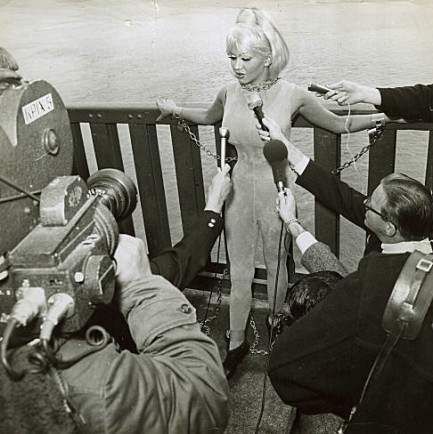| Hollywoodland | Jul 5 2022 |

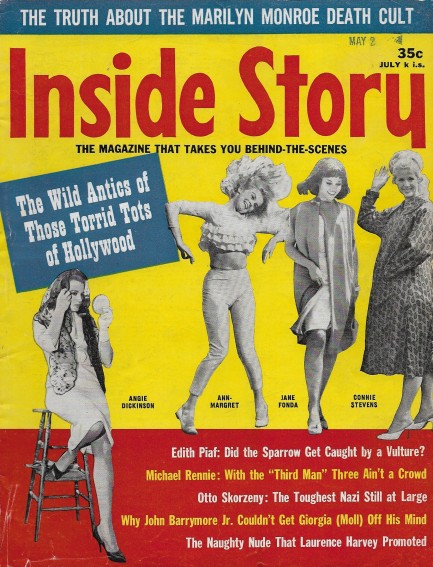
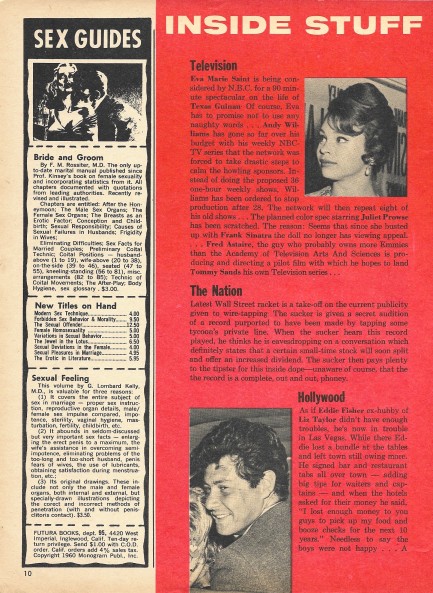
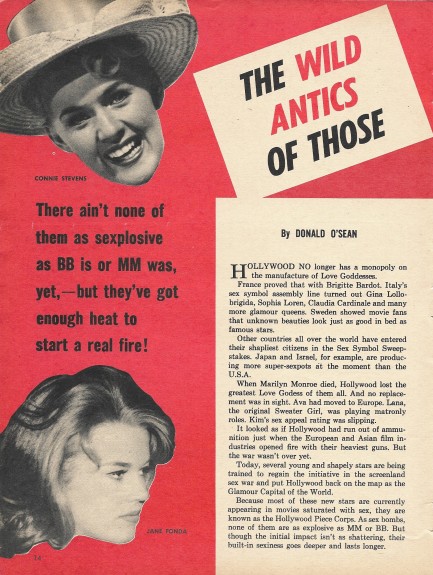
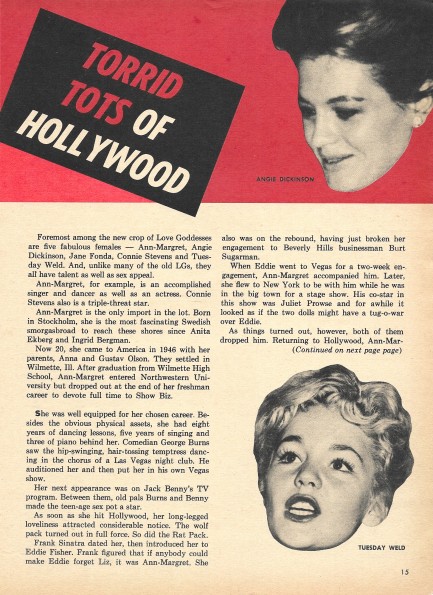
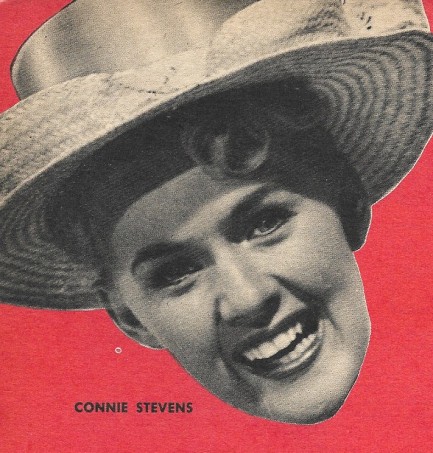
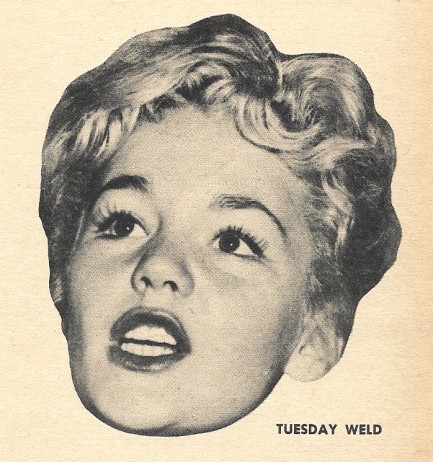
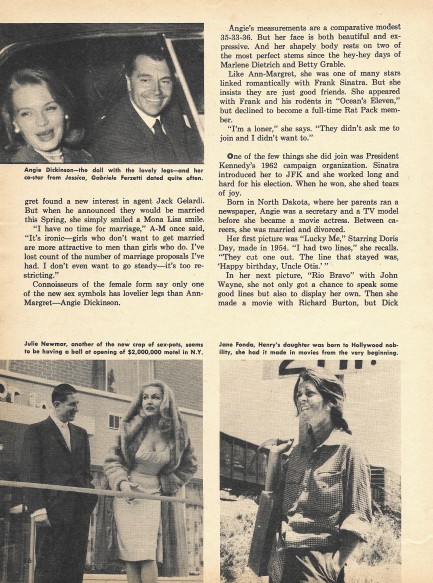
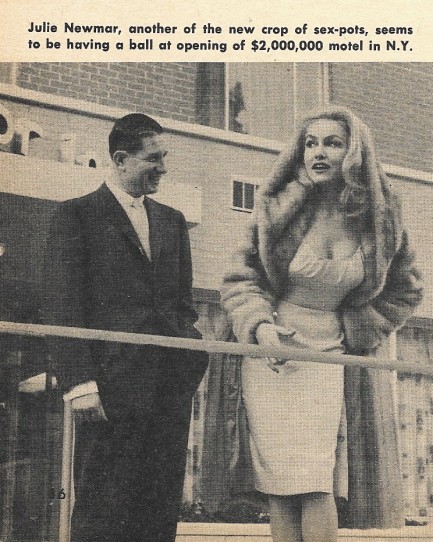
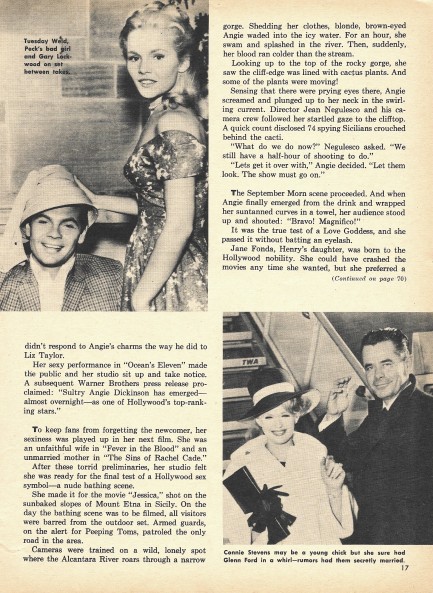
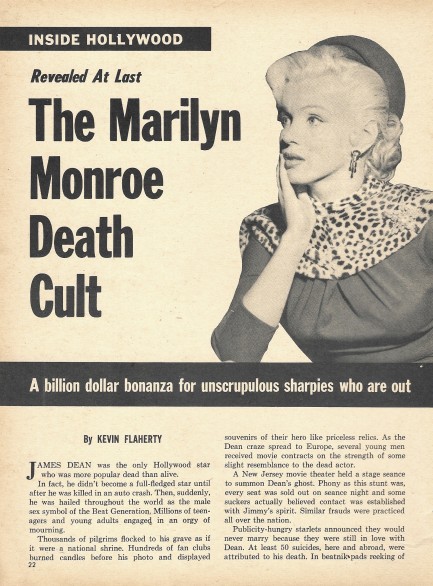
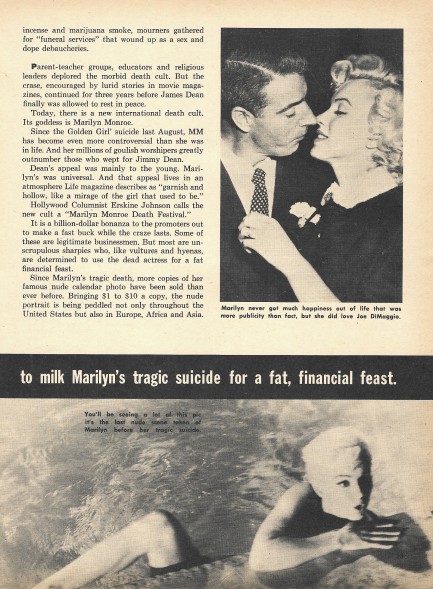
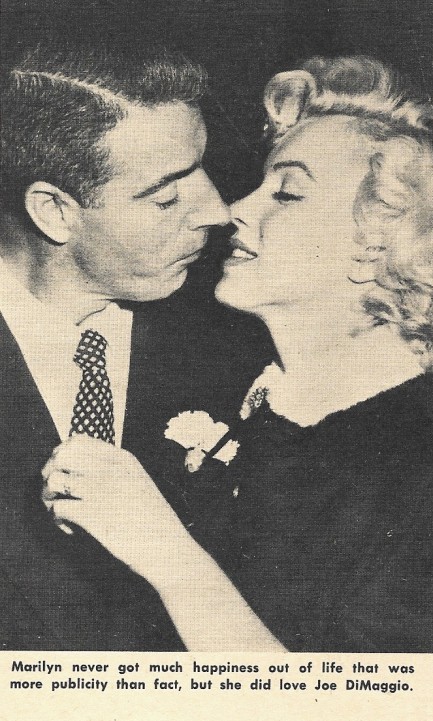

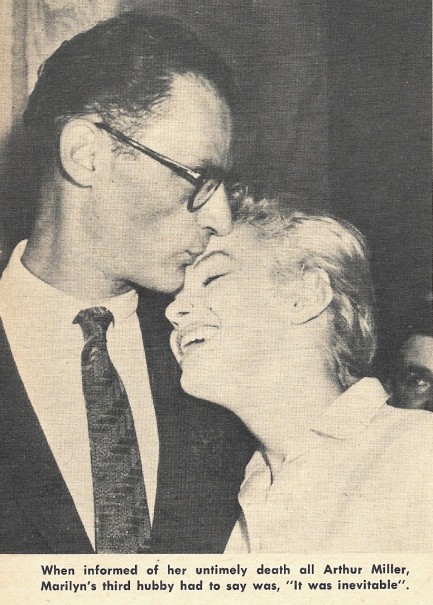

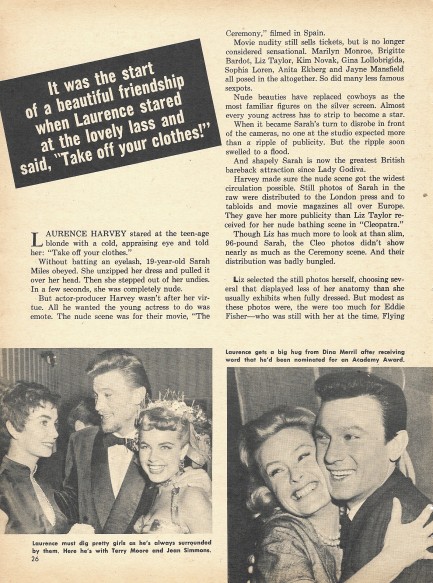
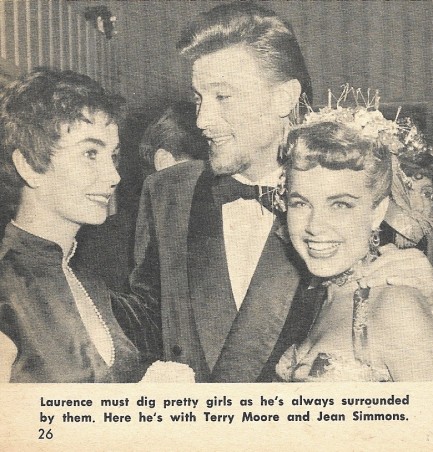
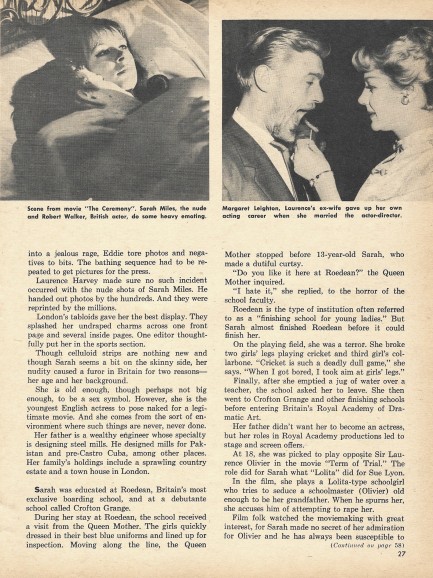
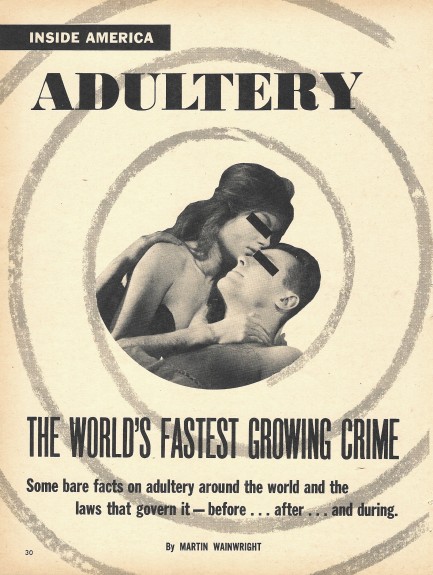
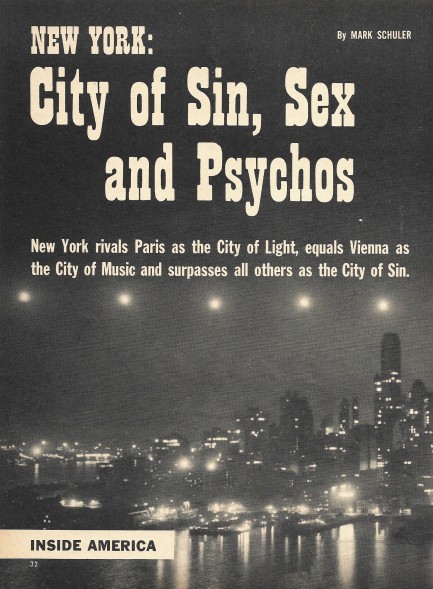
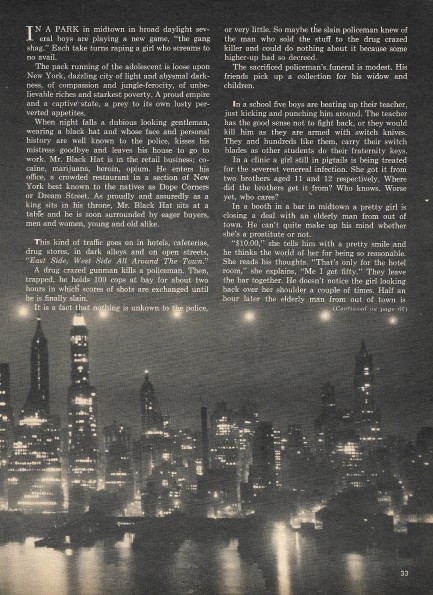
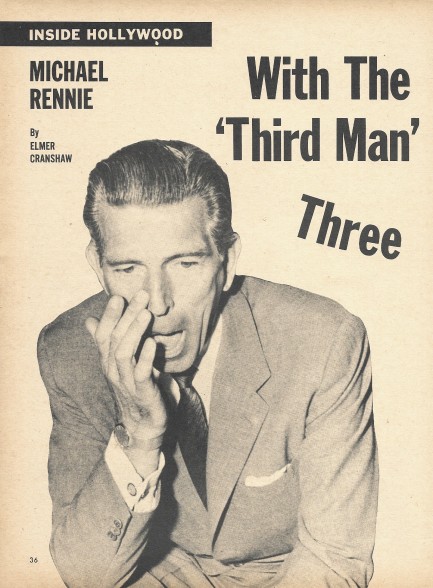
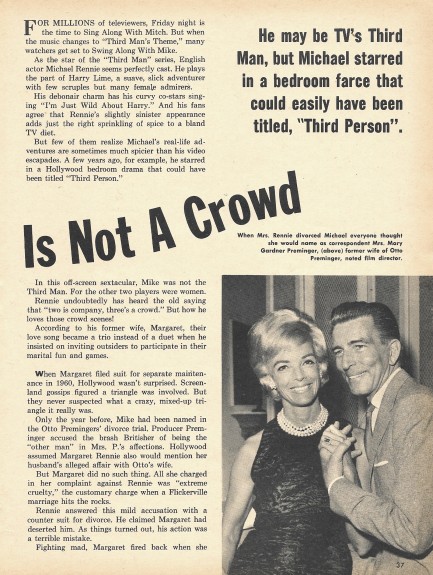
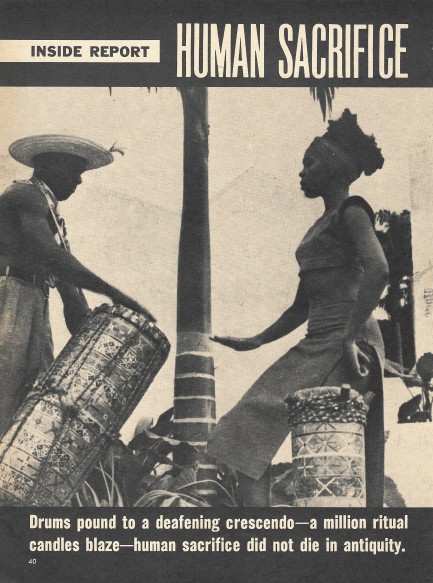
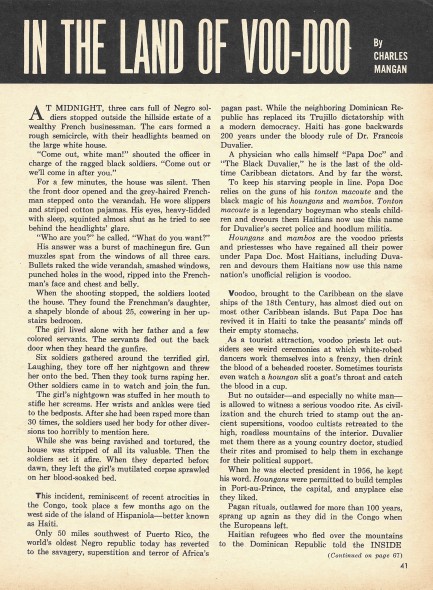
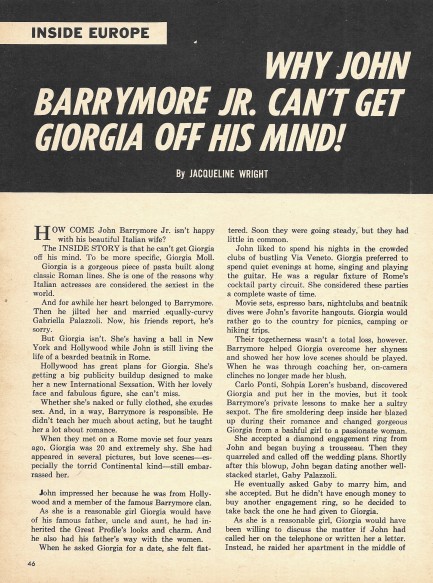
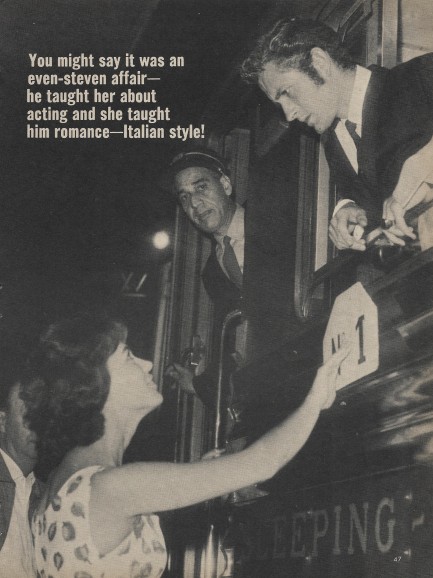
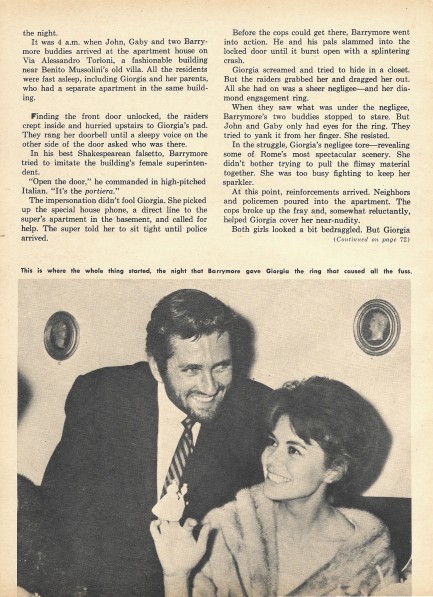
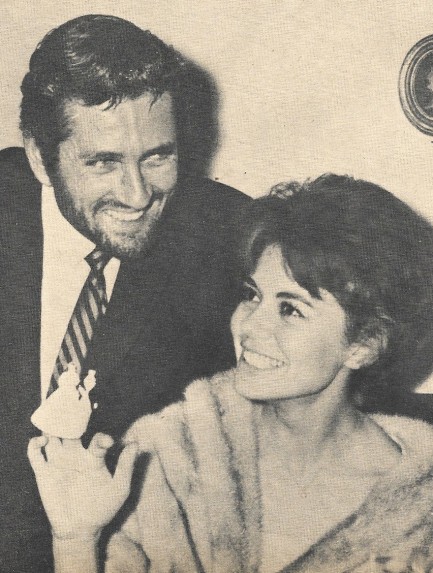
| Hollywoodland | Jul 17 2021 |

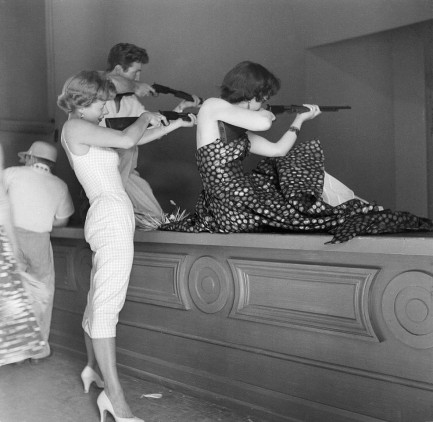
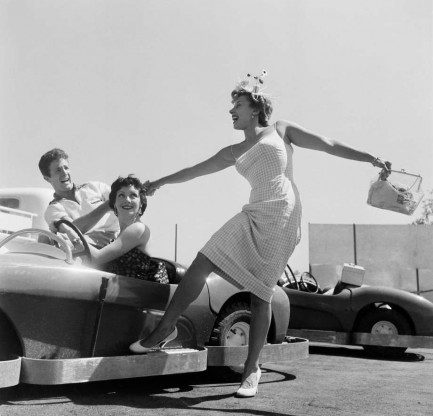


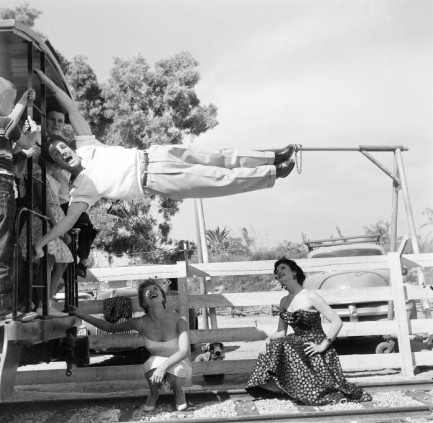
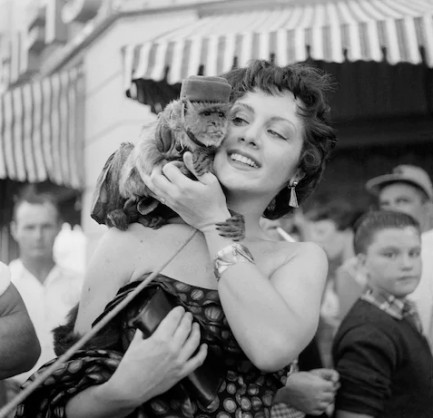
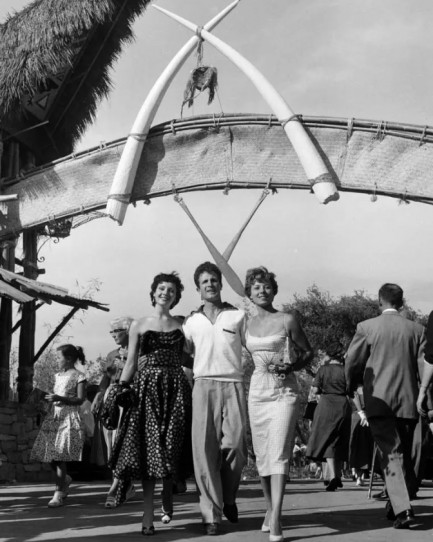
| Intl. Notebook | Sep 25 2019 |

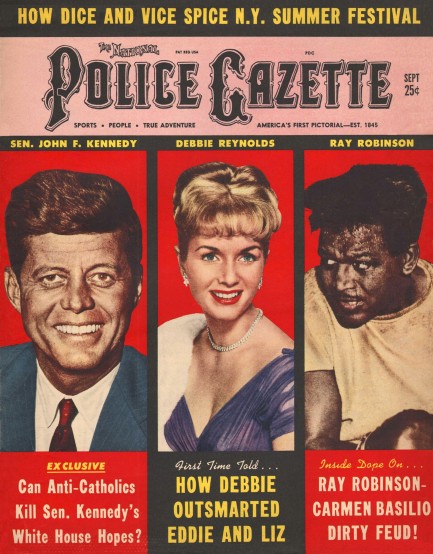
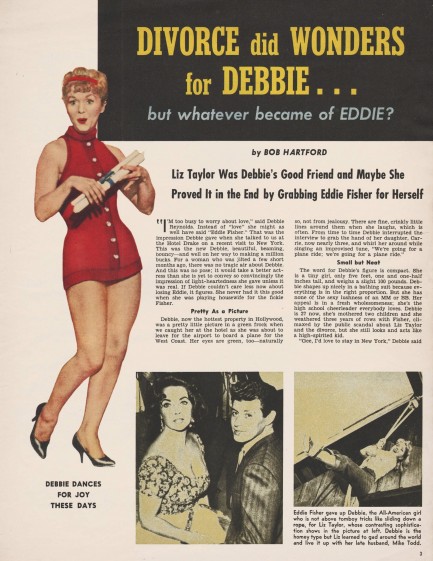
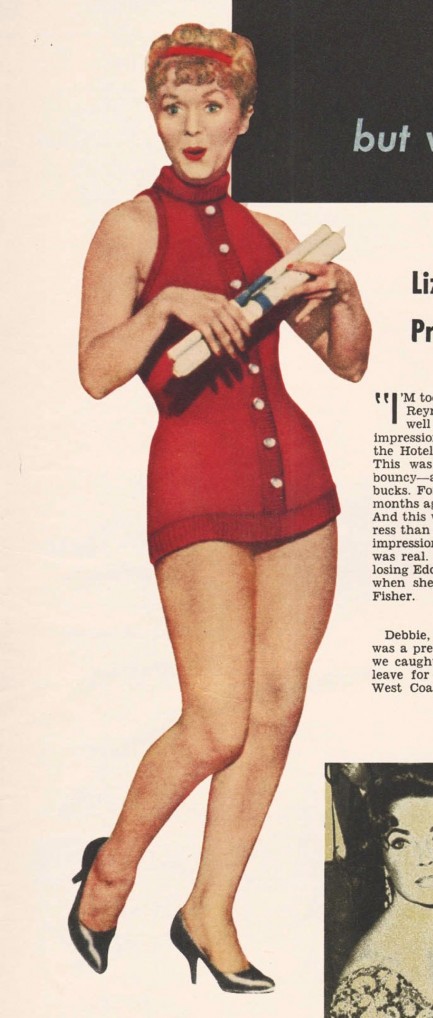
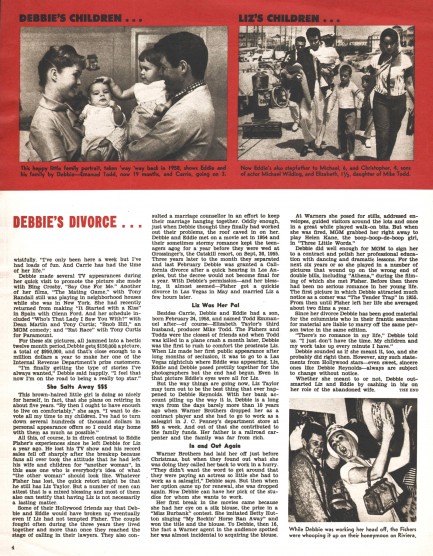
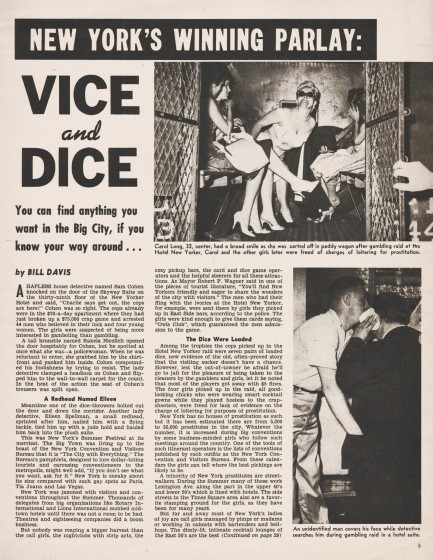
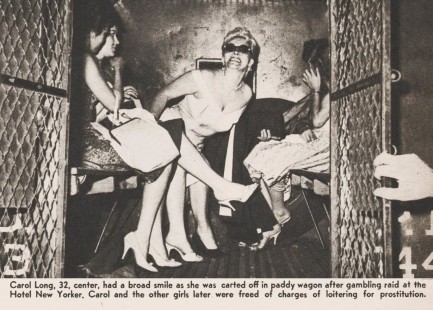
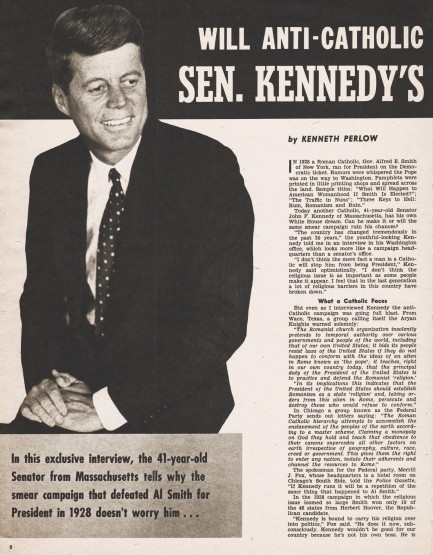
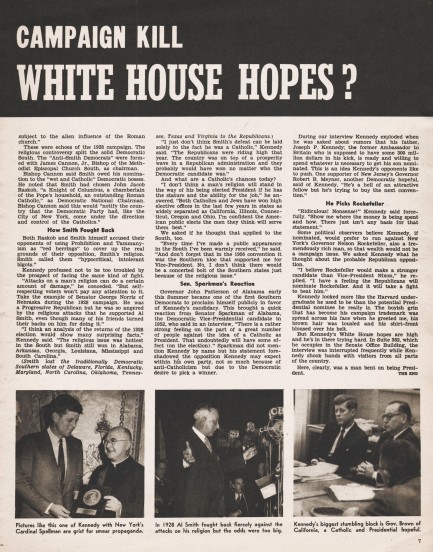
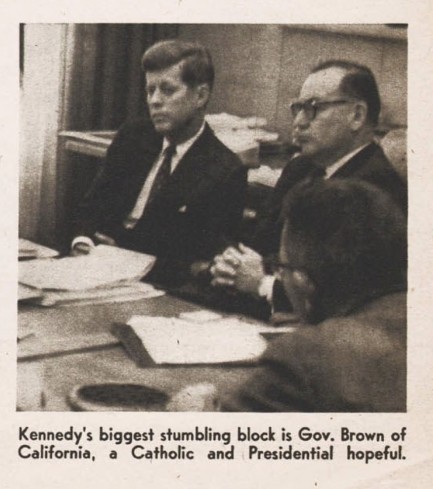
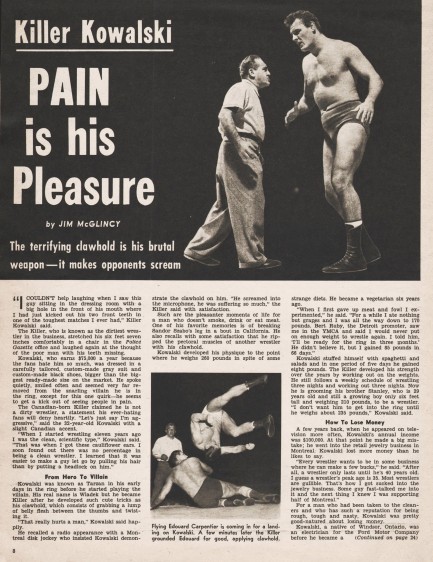
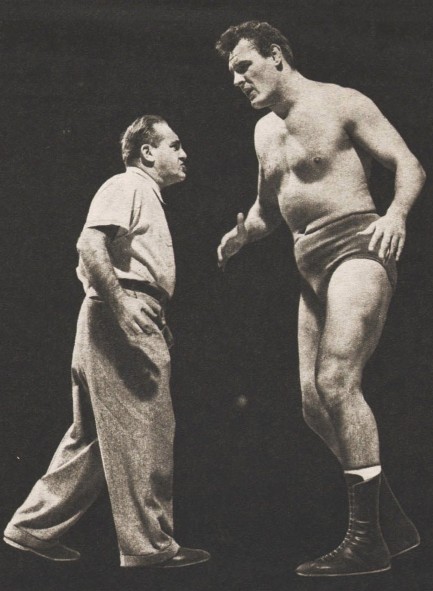
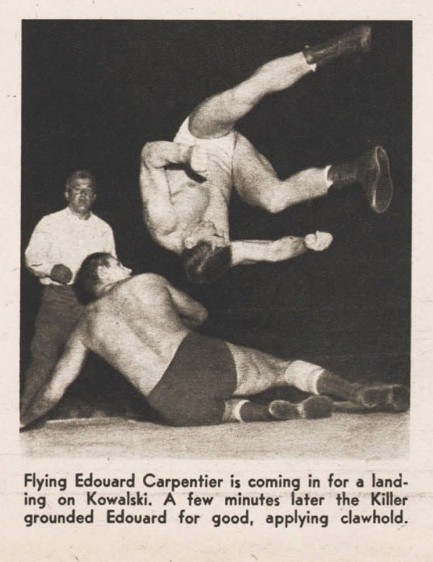
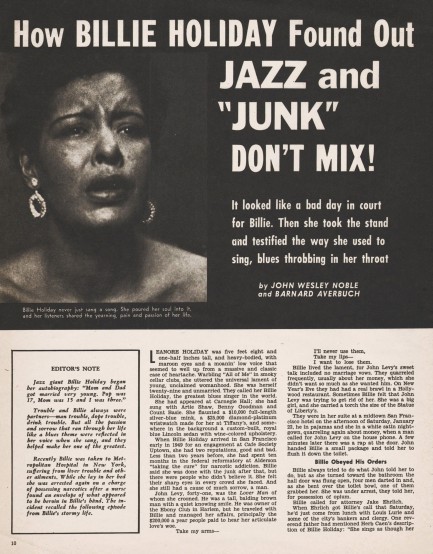
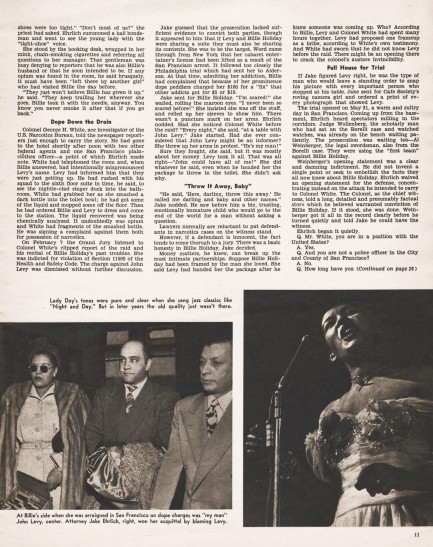
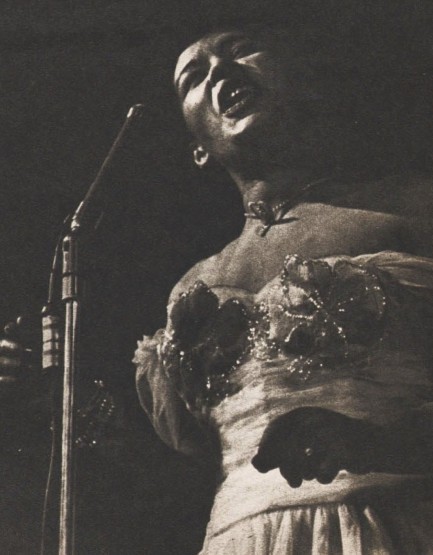
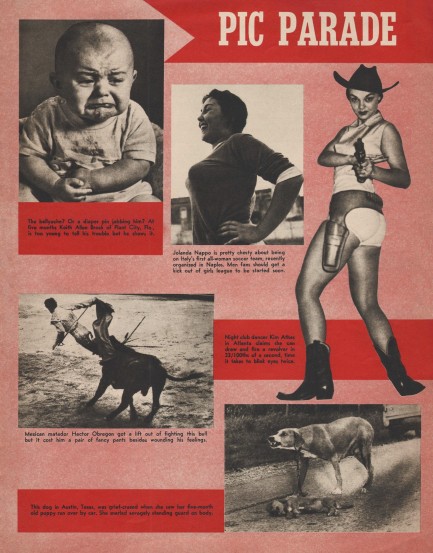
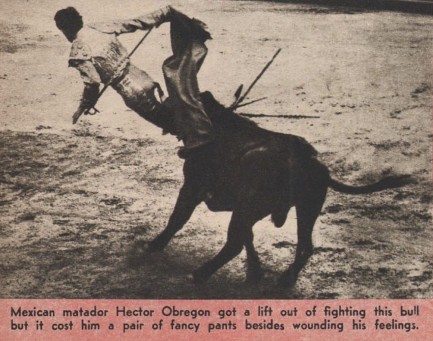
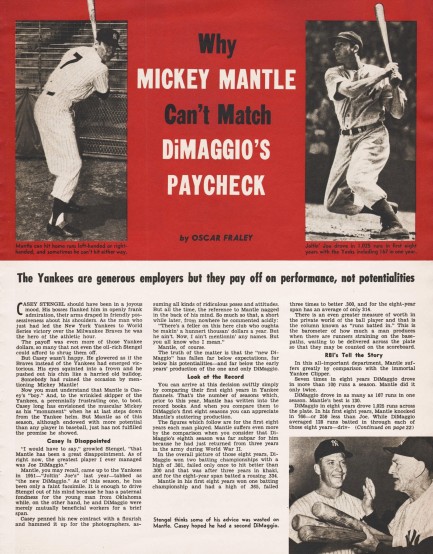
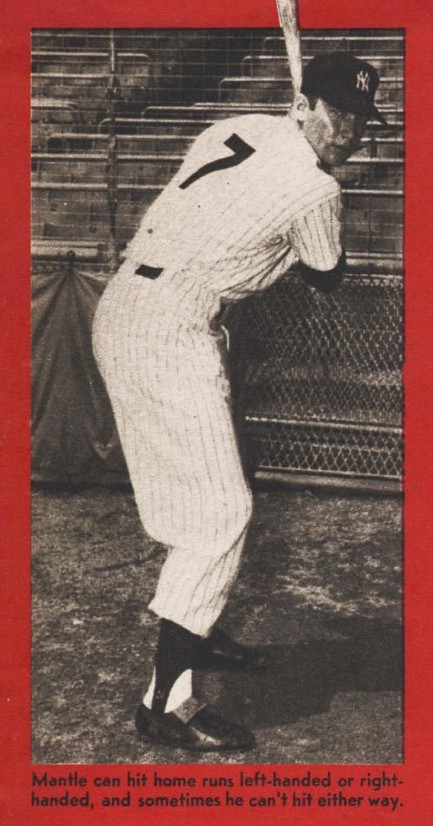

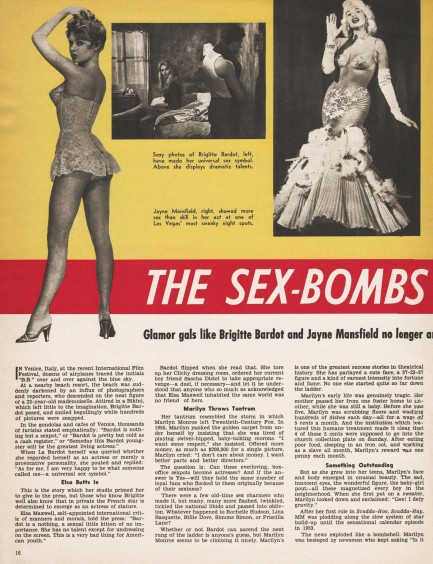
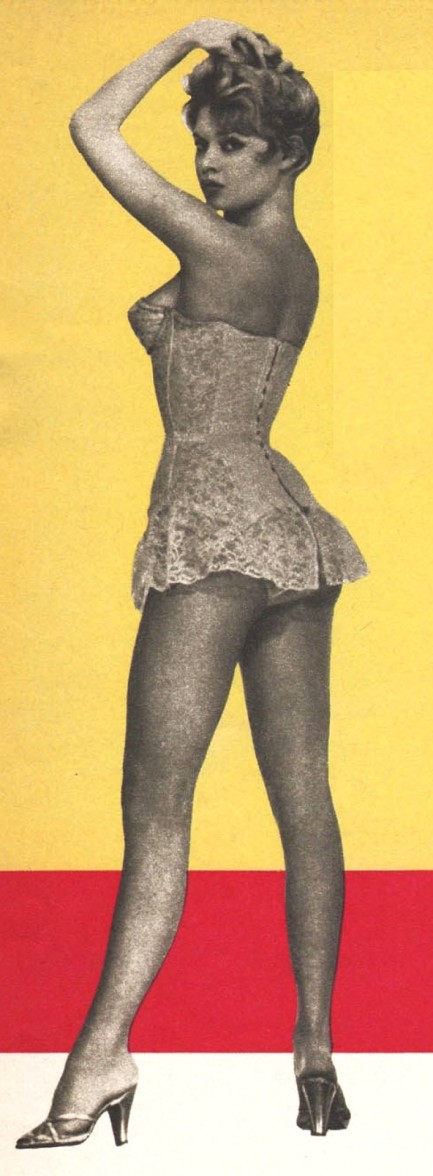
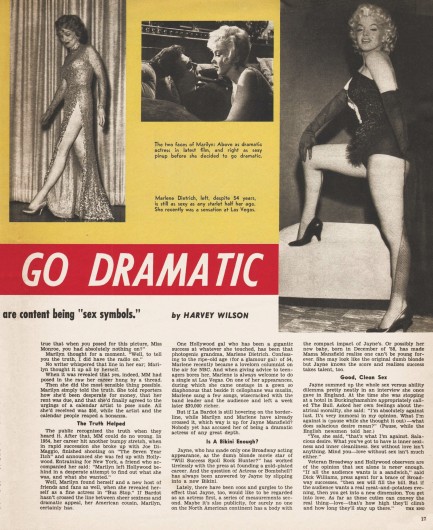
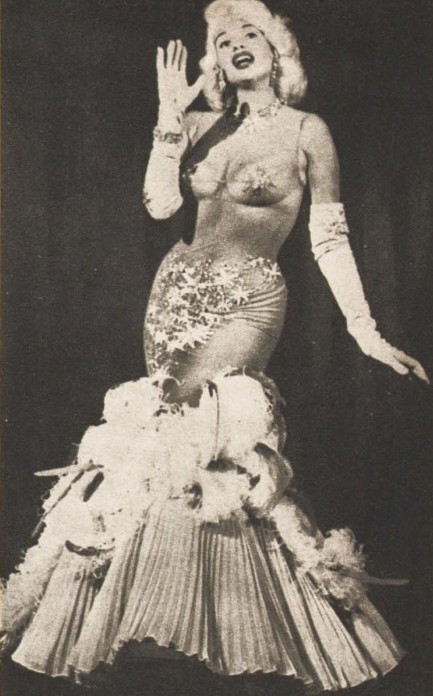
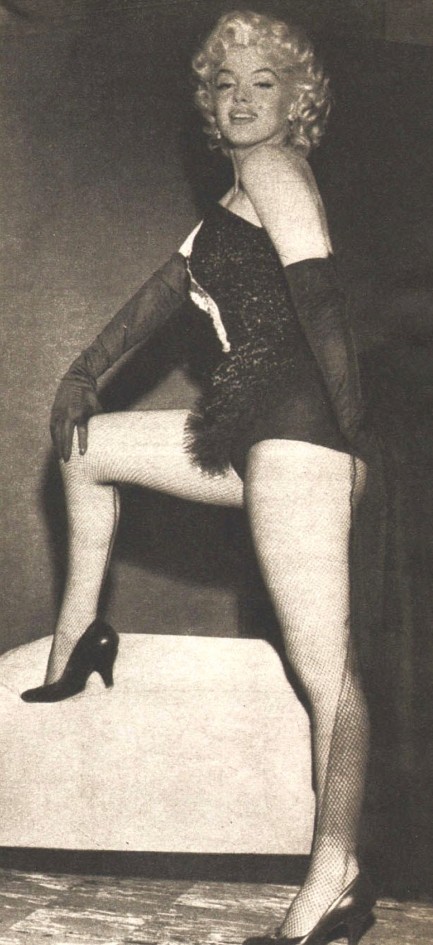

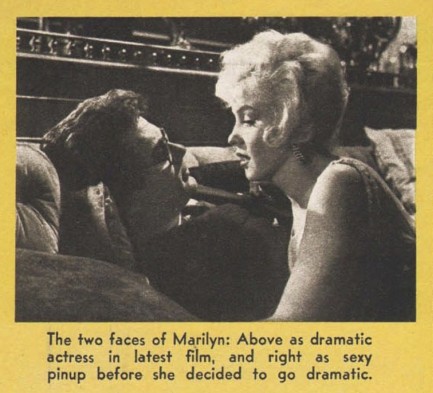
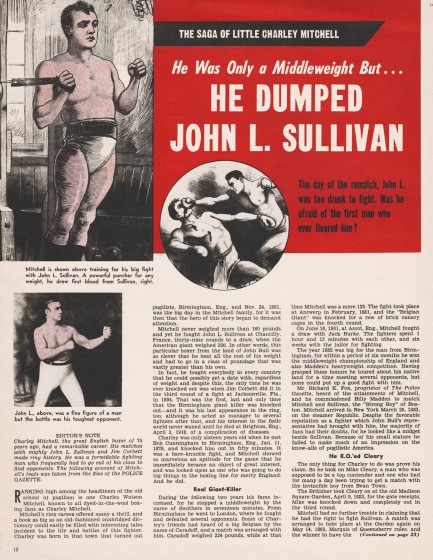
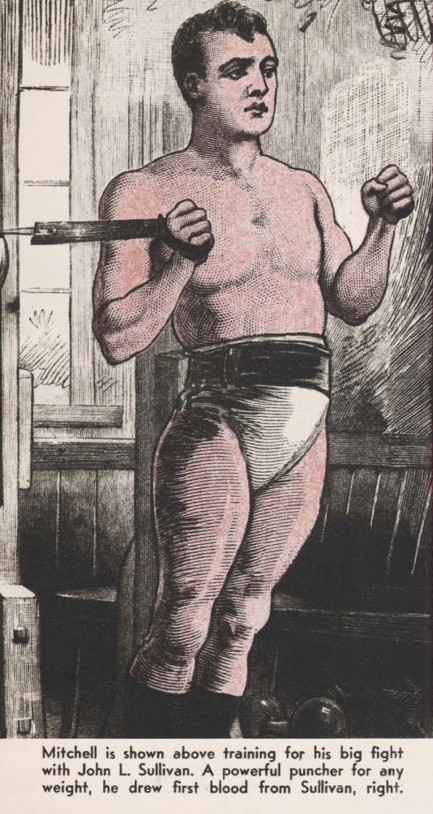
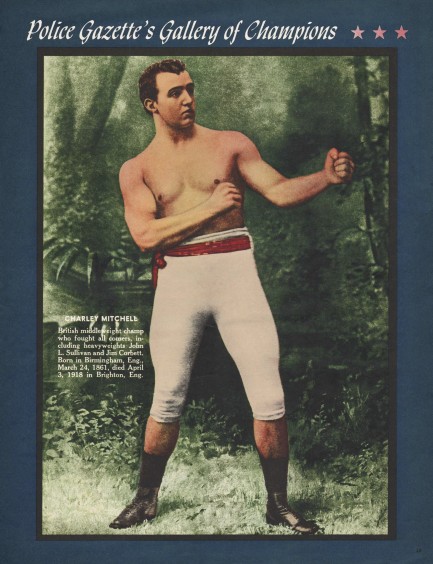
| Hollywoodland | May 28 2019 |

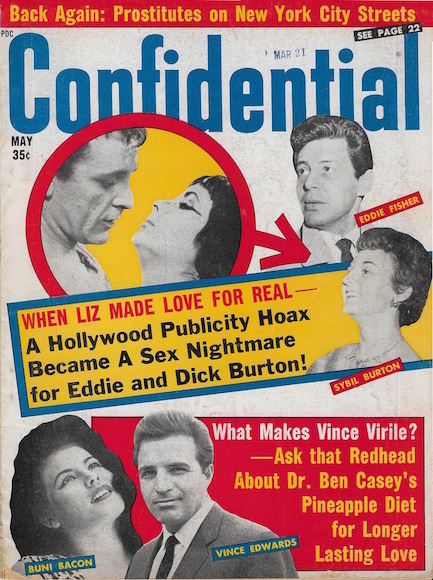
Confidential still managed to entertain, even if its stories were of a less invasive nature than before. But notwithstanding the new rules of engagement, some targets received particularly scathing treatment. Liz Taylor and Richard Burton were among them. The magazine says their legendary affair on the set of Cleopatra began as a studio publicity stunt, which backfired when Taylor actually fell for Burton—and into his bed. That may be true, but failure can be relative. On one hand Taylor's squeaky clean image was ruined forever, but on the other the story of her affair generated immense amounts of free press for Cleopatra.
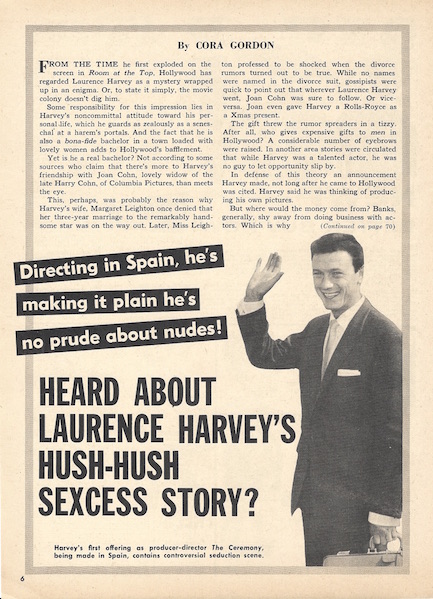
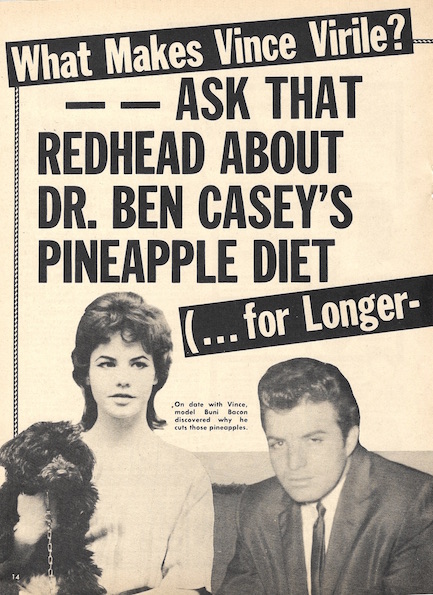
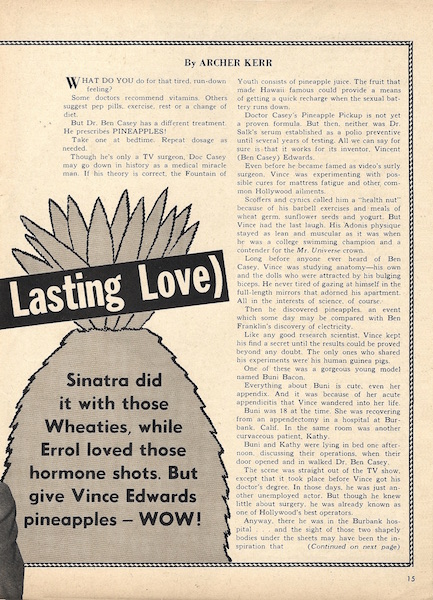
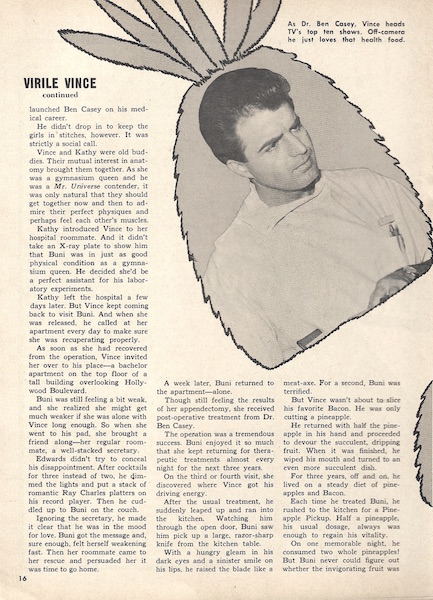
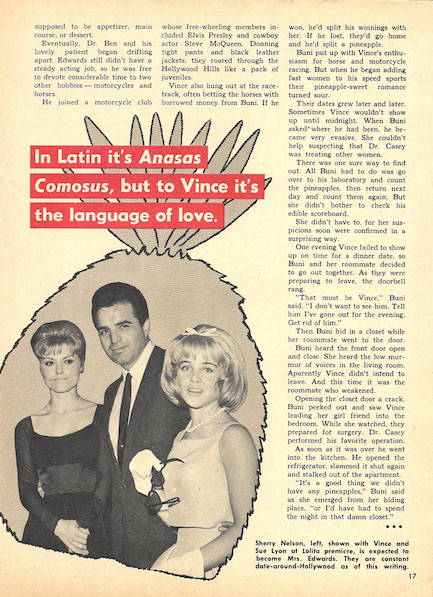
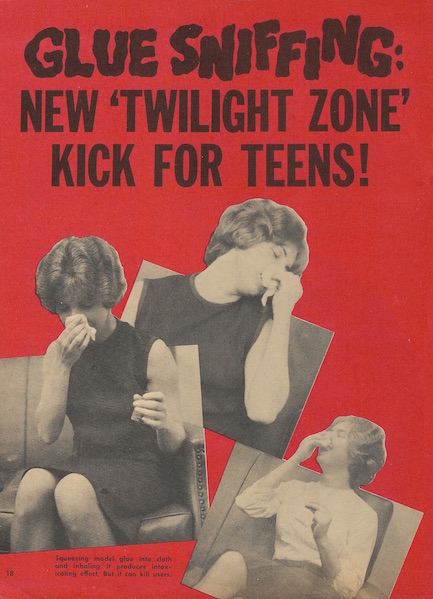
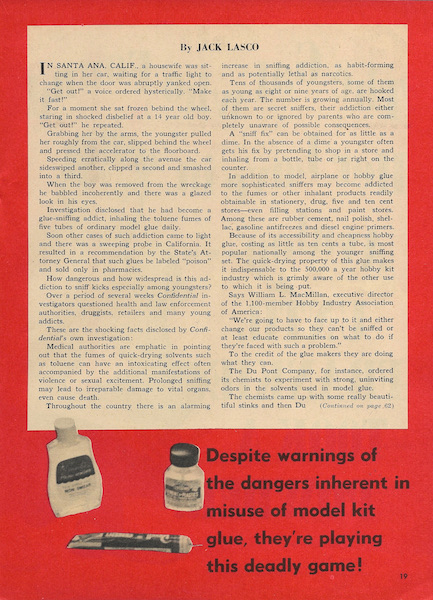
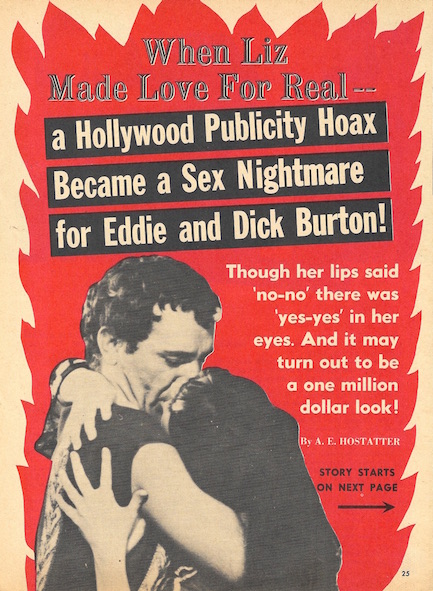
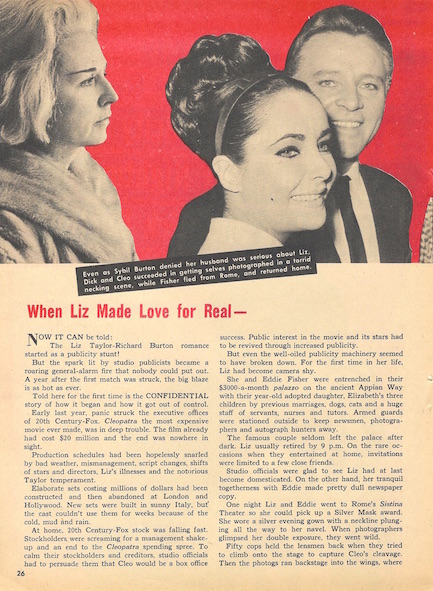
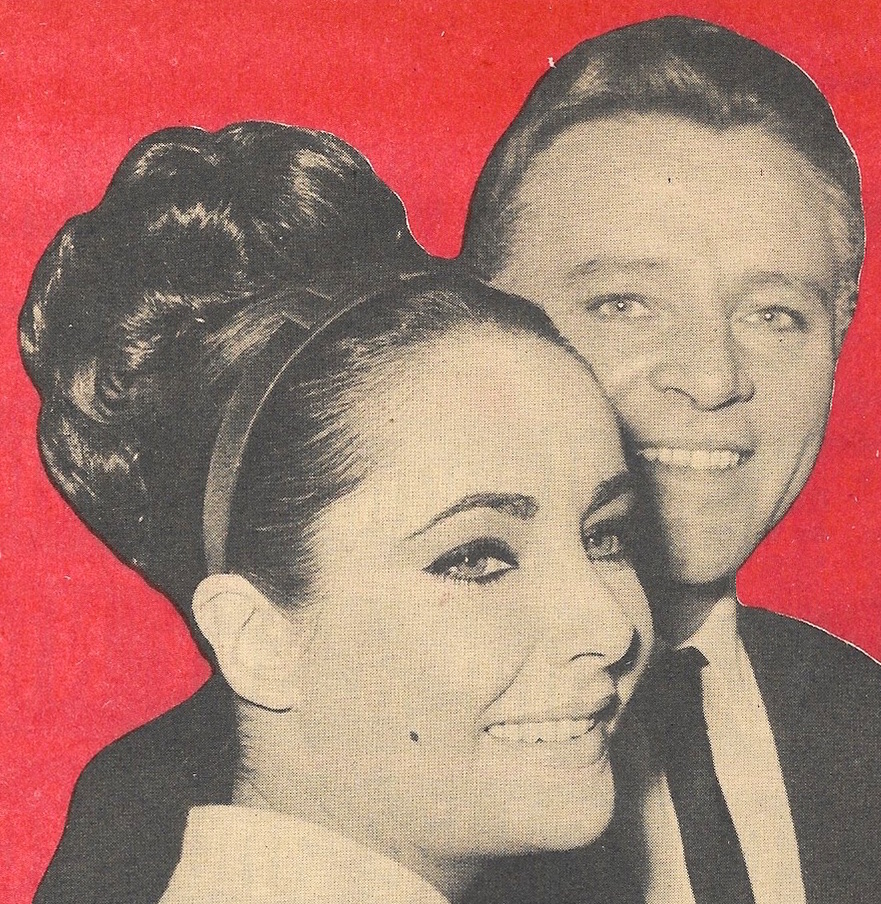
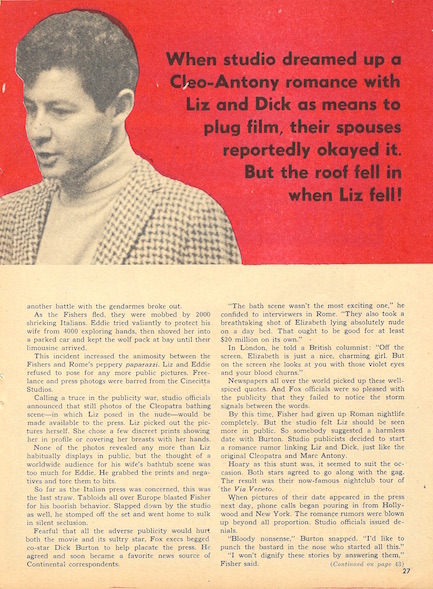
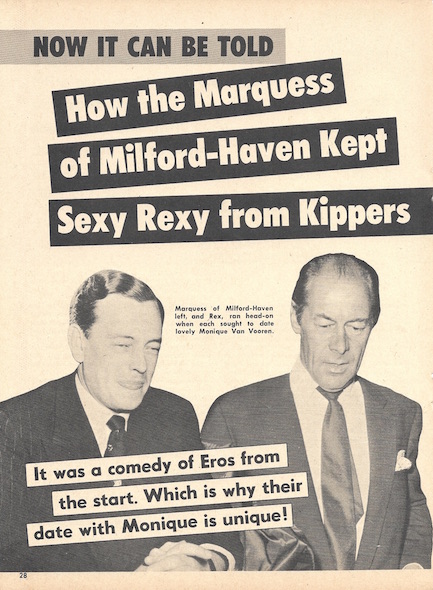
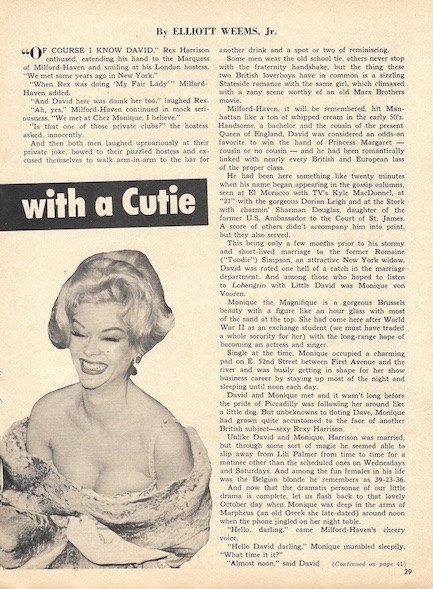
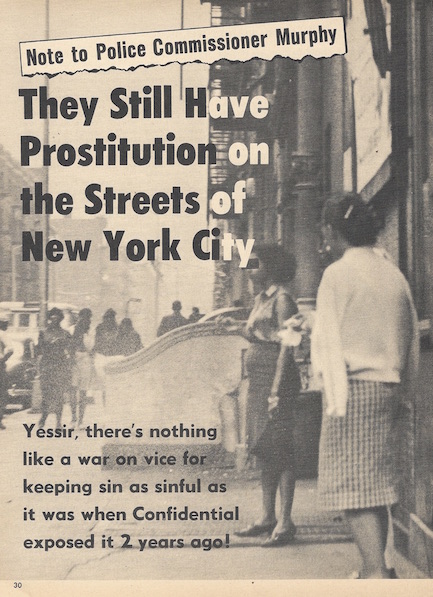
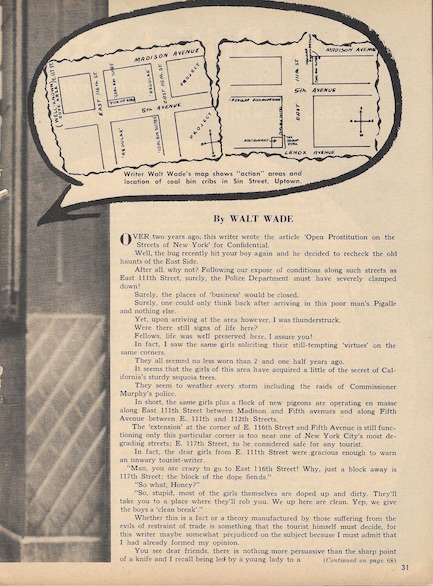
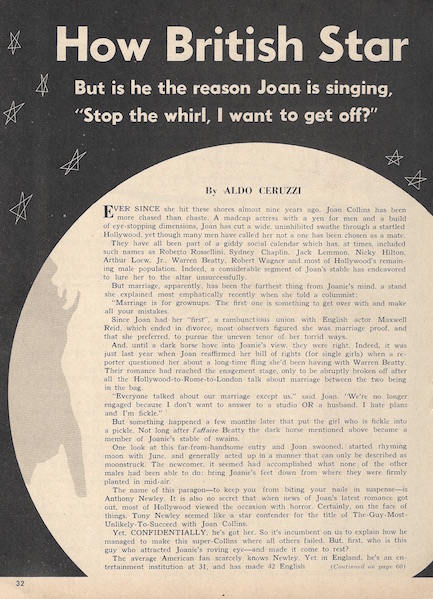
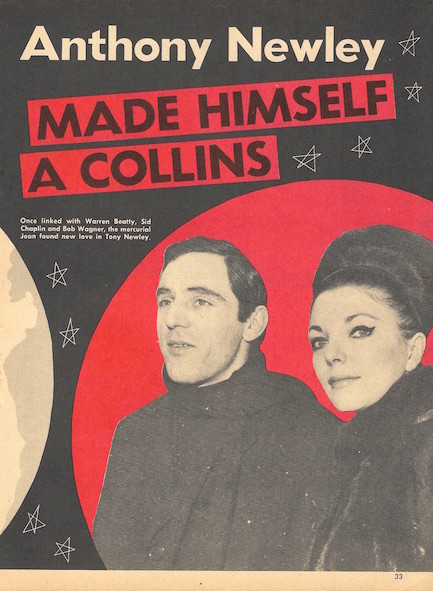
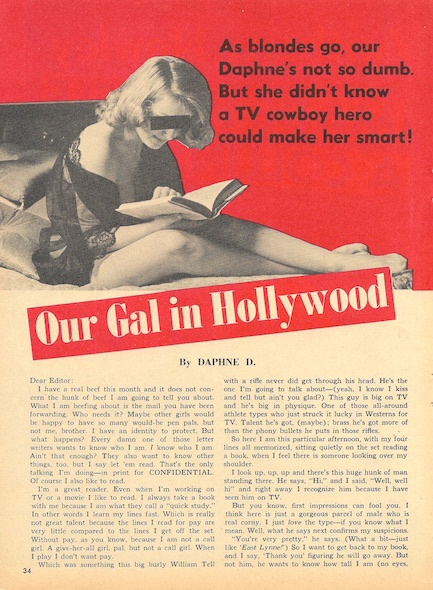
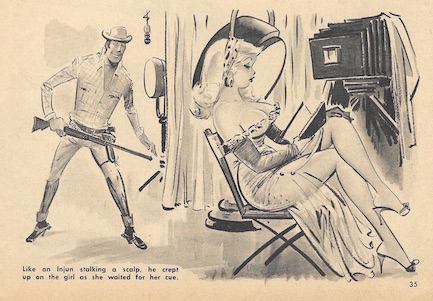
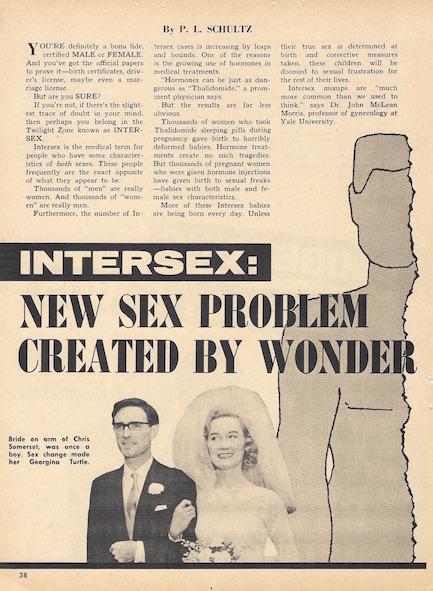
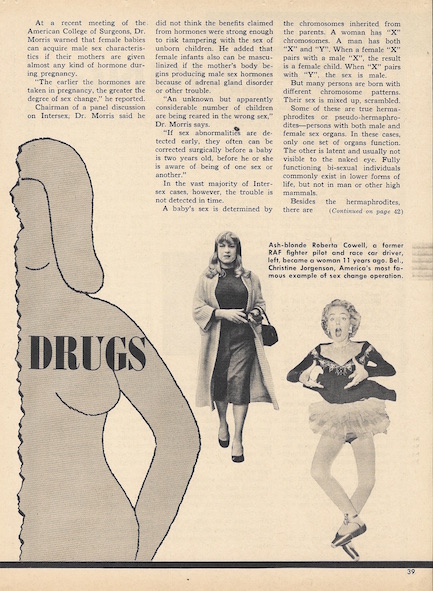
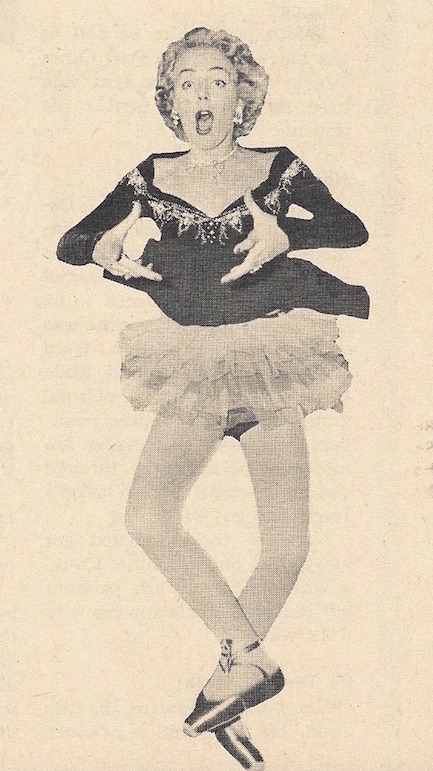
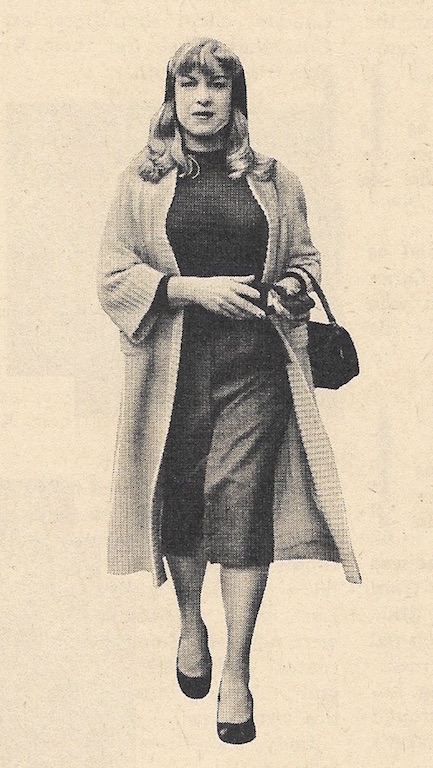
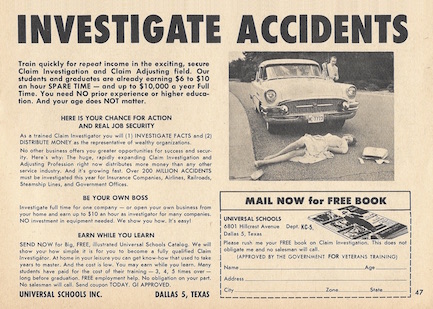
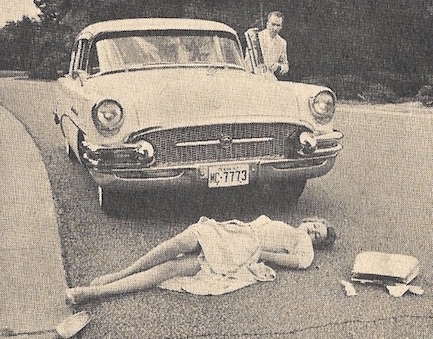
| Vintage Pulp | Jun 8 2014 |

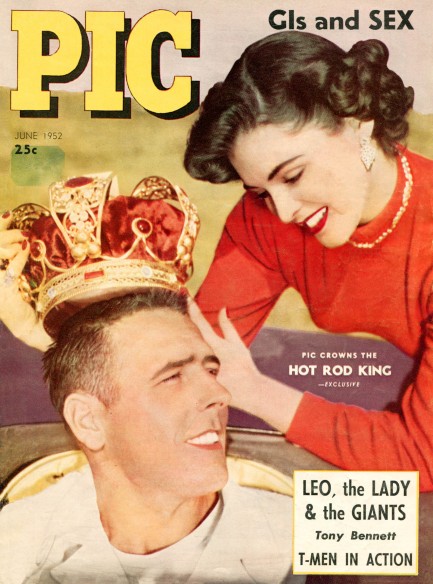
We’ve featured Pic magazine only once before, but not because it was an unimportant publication. Quite the opposite—we’ve seen issues as early as 1936 and as late as 1958, making it both a Depression and World War II survivor, presumably no easy feat and certainly a run indicative of sustained popularity. Early issues seemed focused on sports, but it soon broadened to include celebrities. It was launched by Wagner Publications of New York City, and this issue appeared in June 1952 with a cover featuring actress Suzan Ball placing a crown on the head of Akton Miller, a man Pic had chosen as its Hot Rod King. Inside you get a raft of Hollywood stars, including photos of Yvonne De Carlo in Uruguay, Marilyn Monroe, Janet Leigh, and Joan Vohs, shots of New York Giants manager Leo Durocher and his beautiful actress wife Laraine Day, and some nice boxing pictures. There’s also an interesting feature on the day’s top vocalists (with African-Americans notably excluded), and a profile of crooner Tony Bennett.
It was then that her train to stardom jumped the tracks. She injured her leg performing a dance number in East of Sumatra, and later in the year had a car accident and hurt the leg again. Treatment for those two injuries led to the discovery of a cancerous tumor. Soon afterward she fell and broke the limb, and when doctors decided they couldn’t remove the tumor they instead took the entire the leg. That was in January 1954. Ball soldiered on in her show business career with an artificial leg, starring in Chief Crazy Horse, though she lost fifteen pounds during the production, and later playing nightclub dates and appearing on television shows. In July 1955 she collapsed while rehearsing for the show Climax, whereupon doctors discovered the cancer had metastasized and spread to her lungs. A month later she died at age twenty-one. We have about fifty scans below.
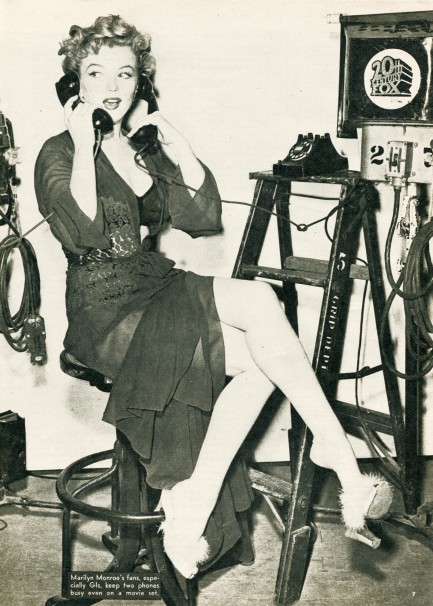
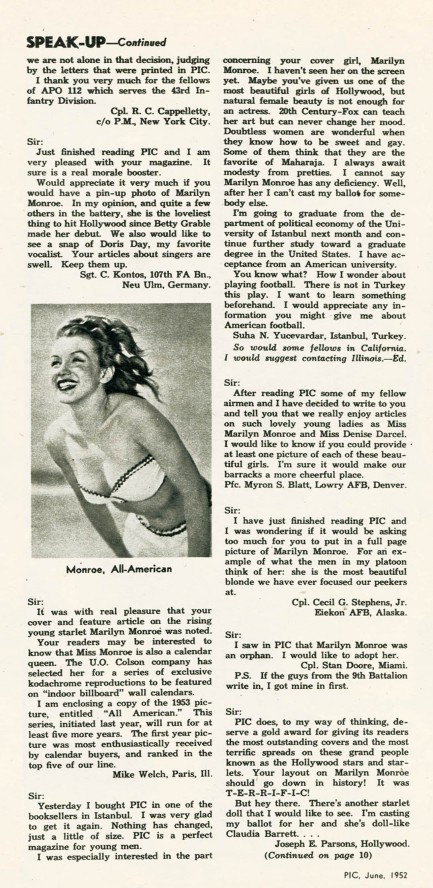
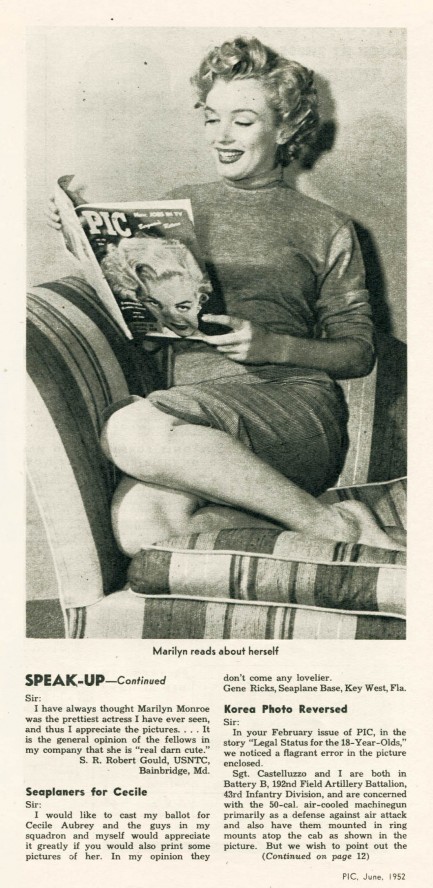
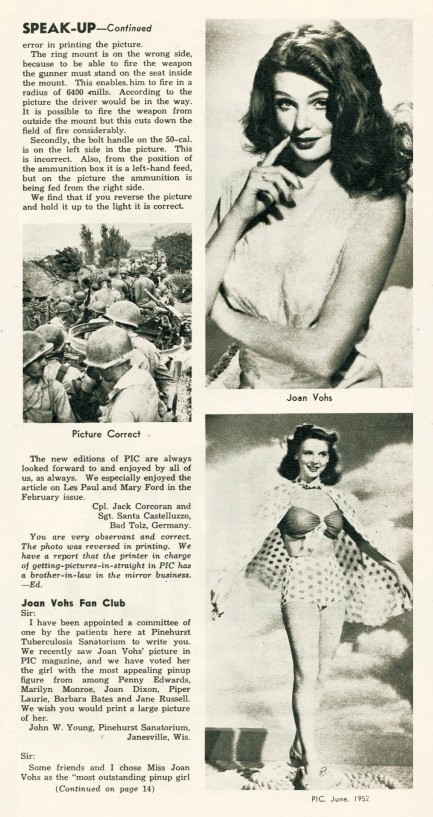
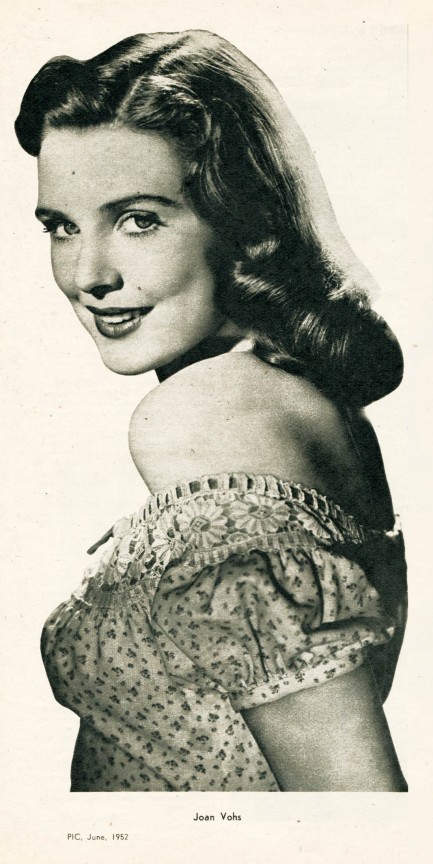
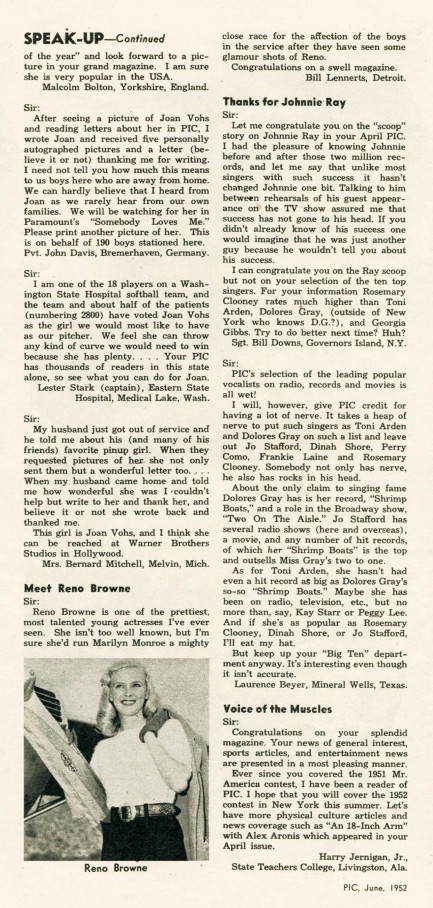
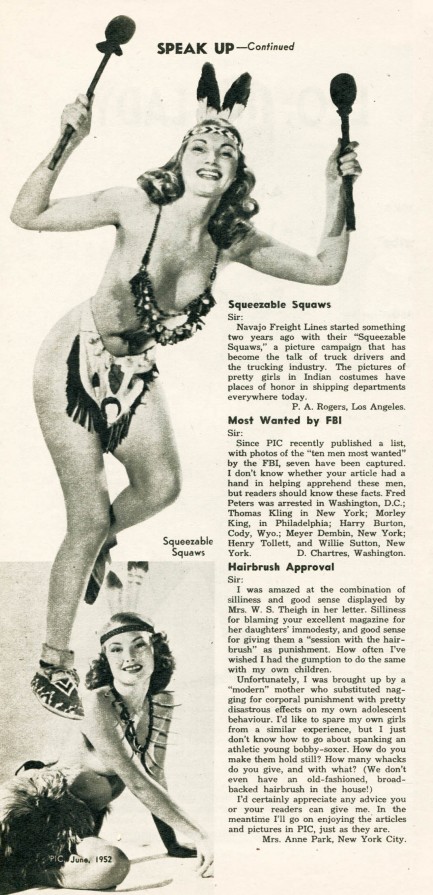
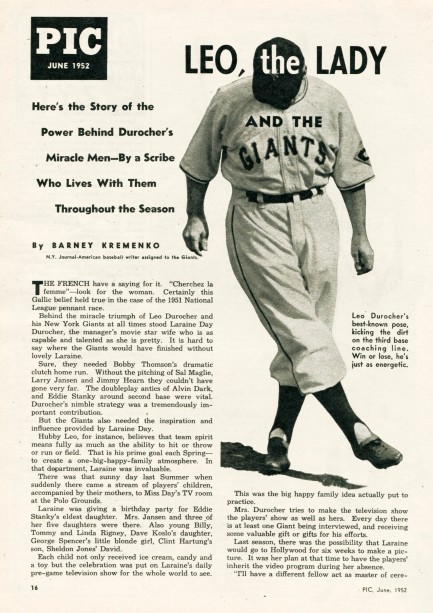
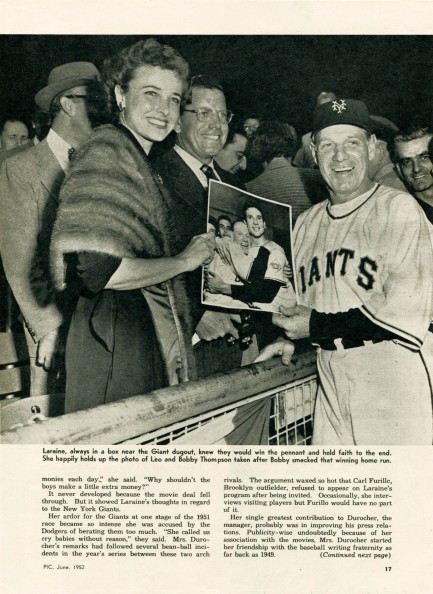
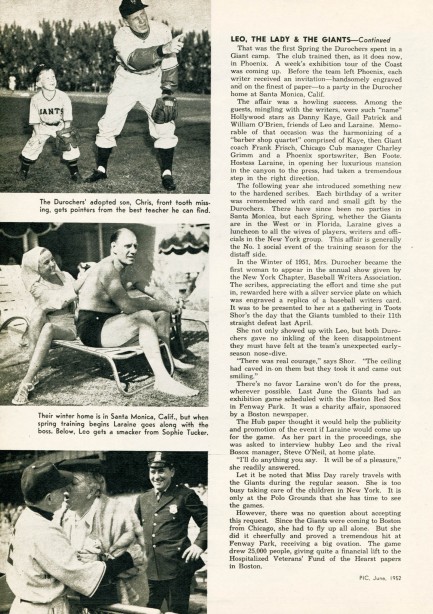
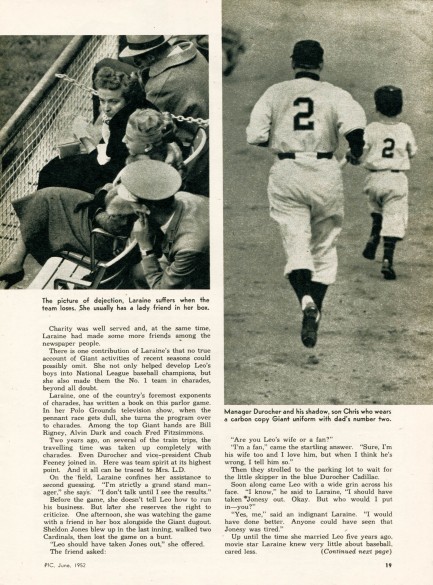
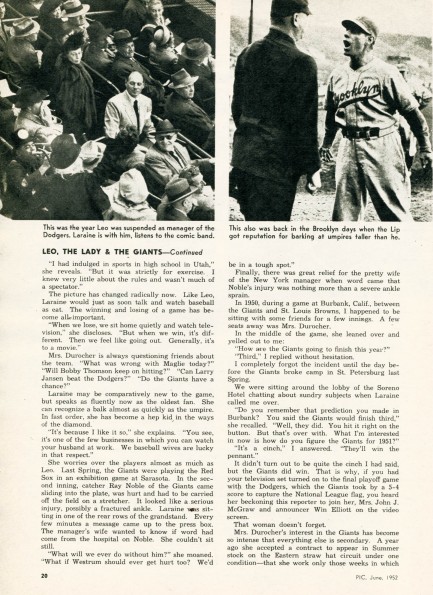
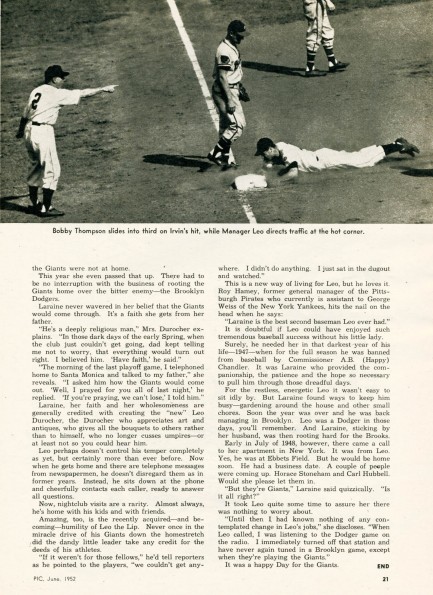
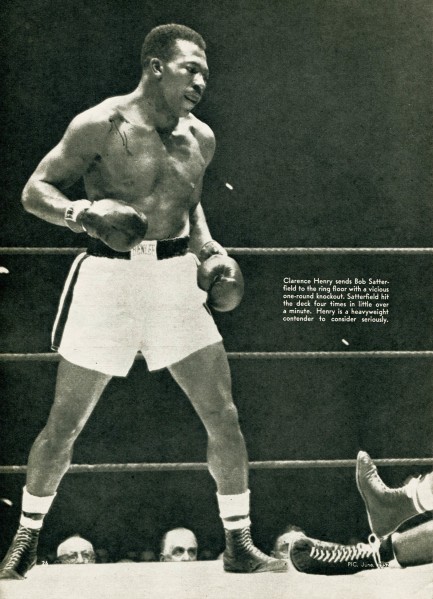
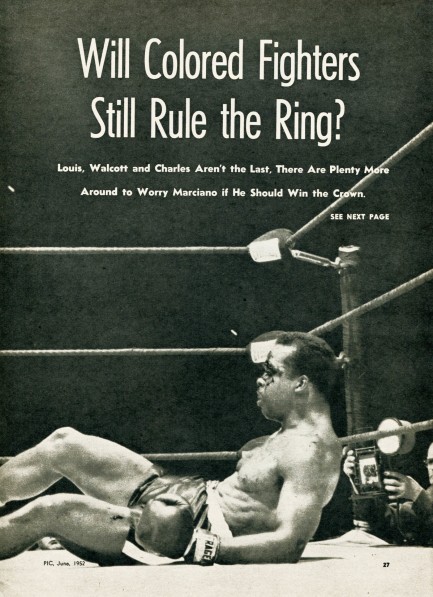
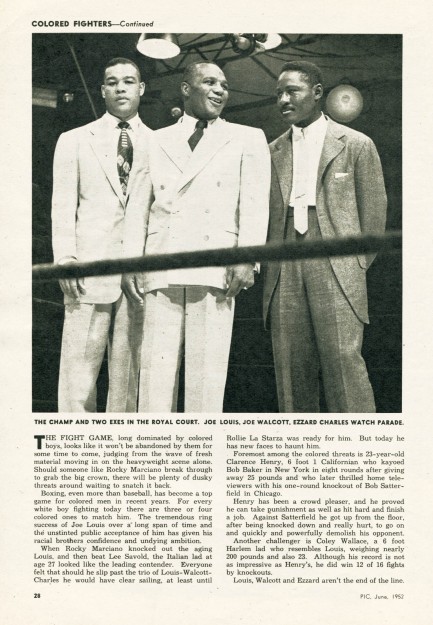
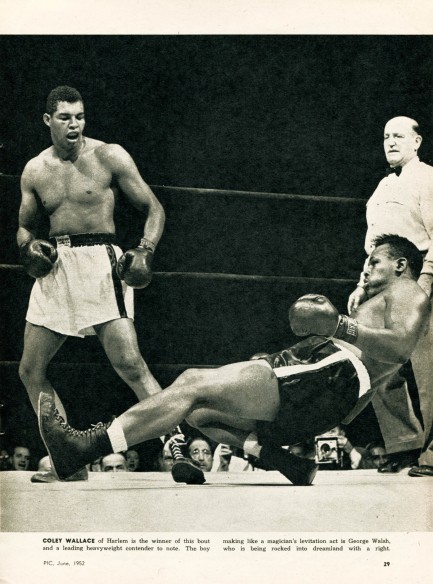
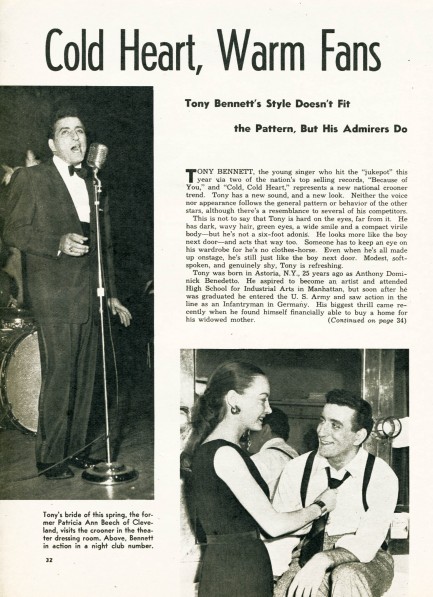
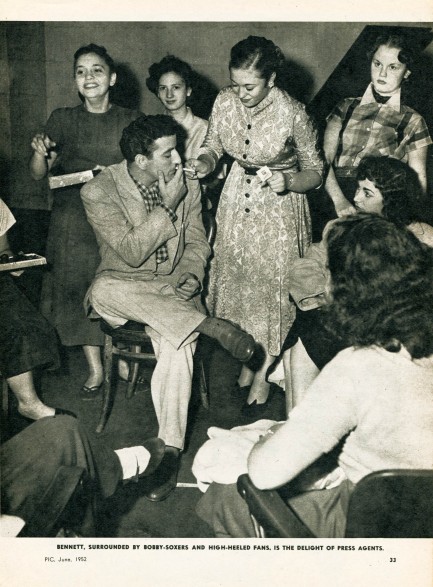
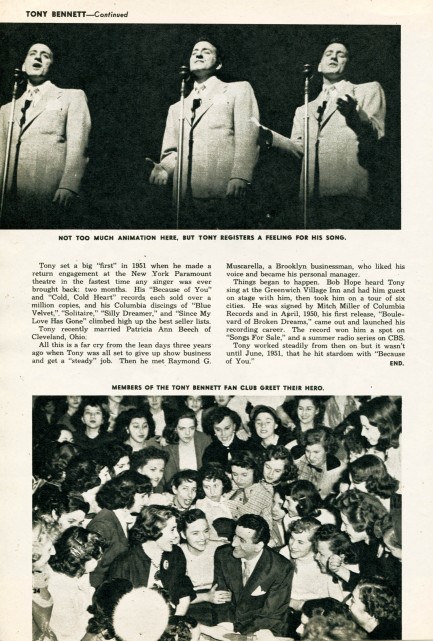
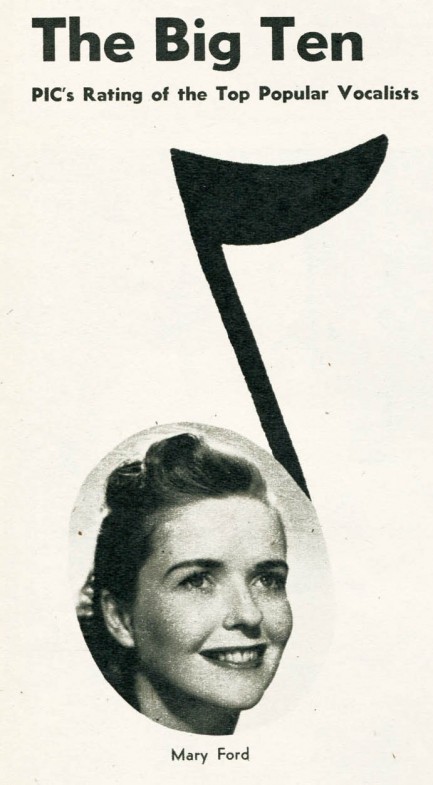
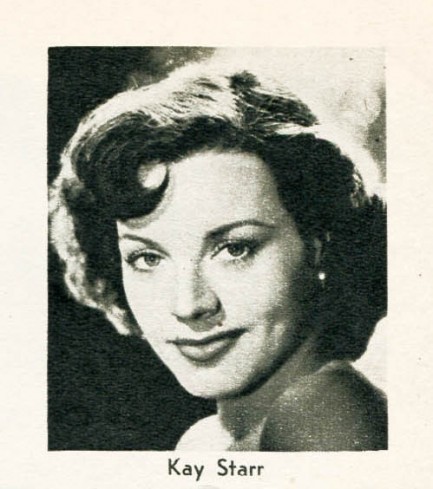
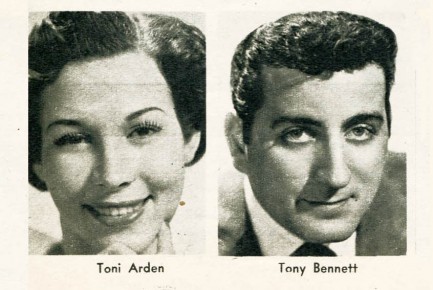
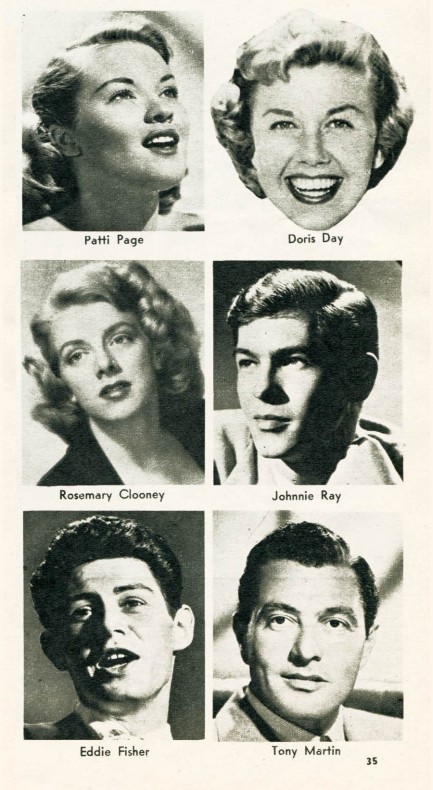
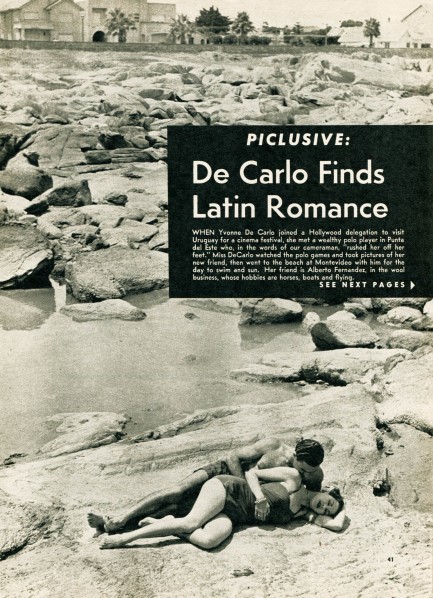
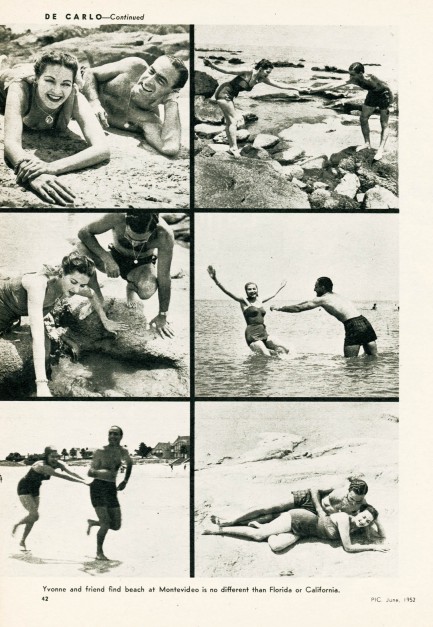
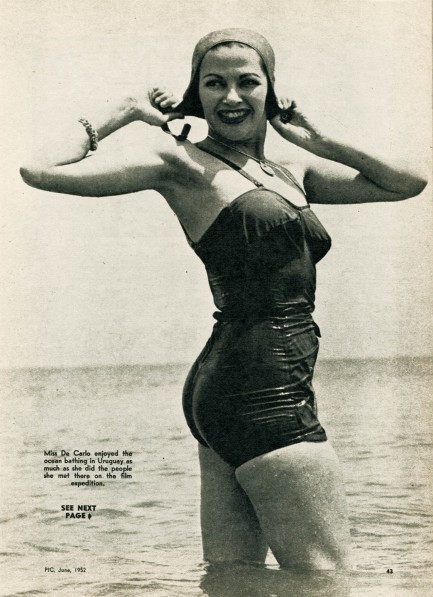
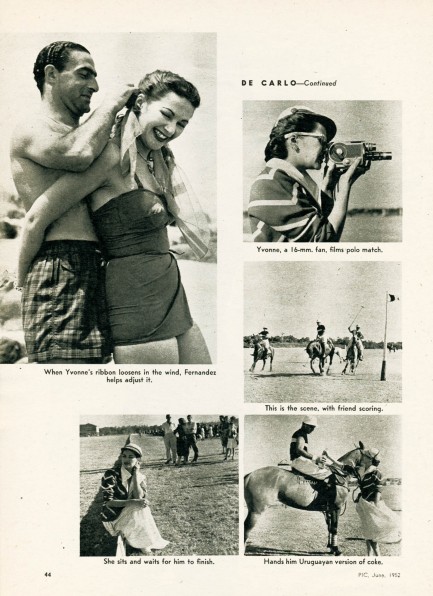
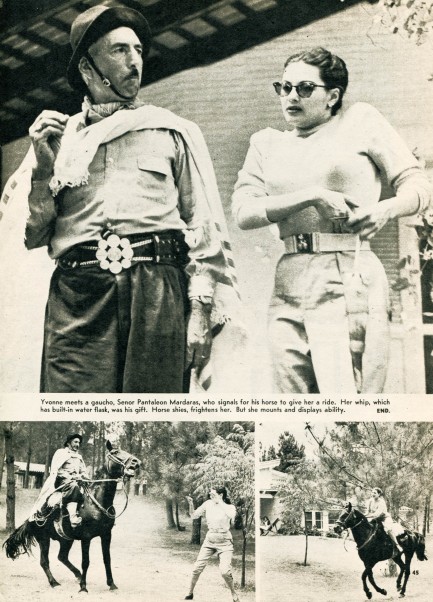
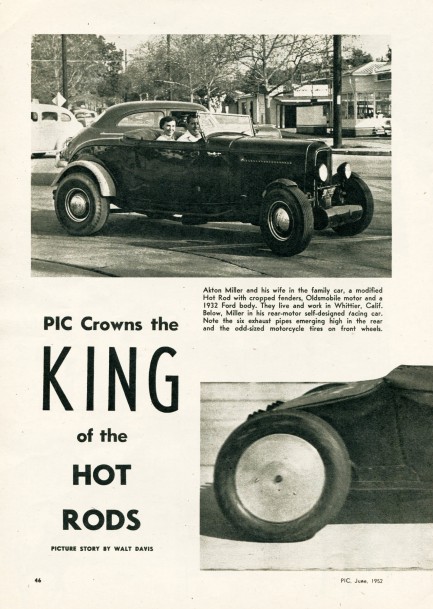
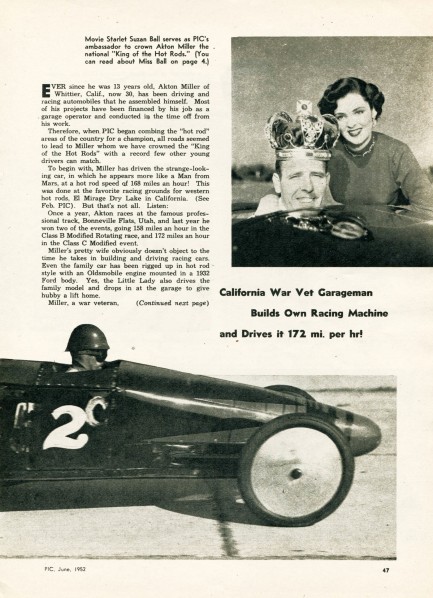
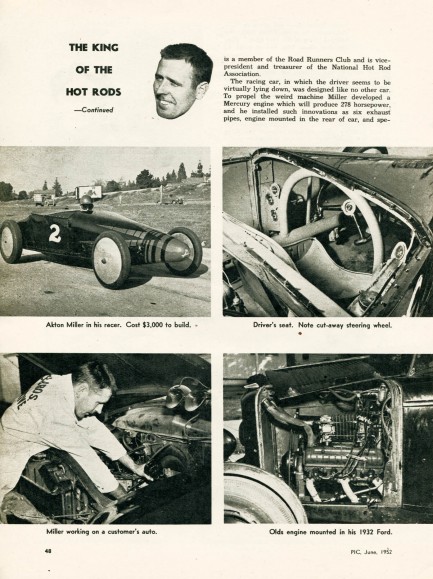
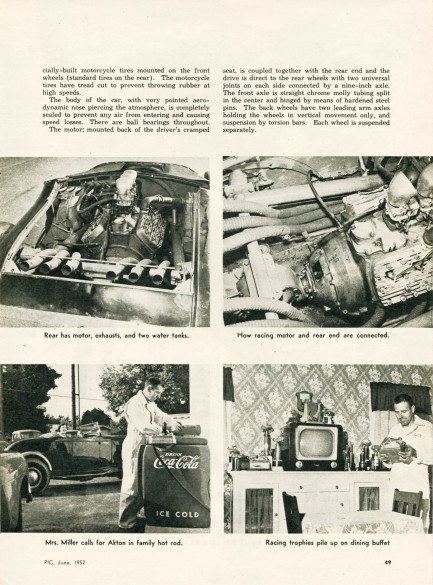
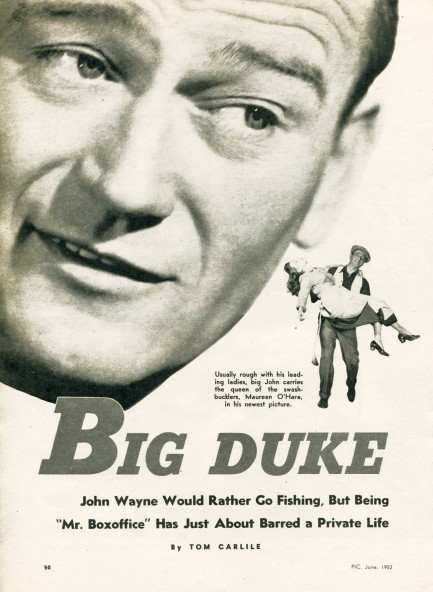
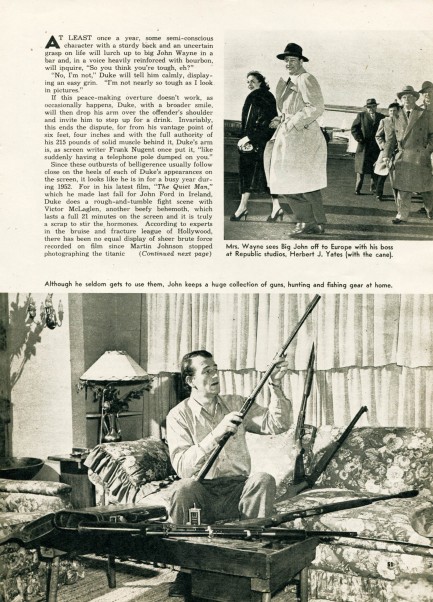
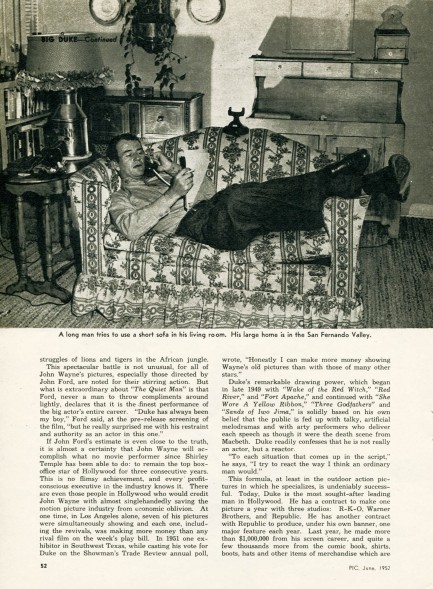
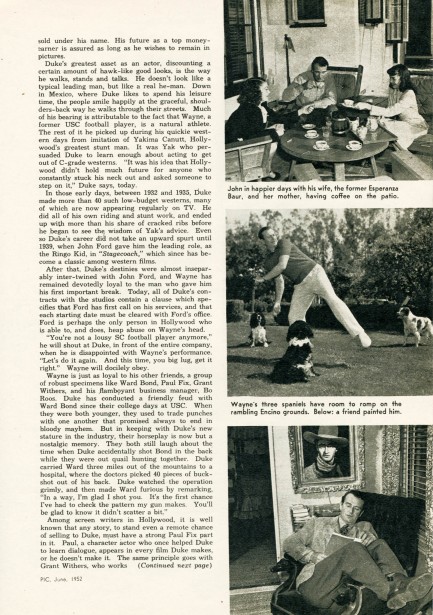
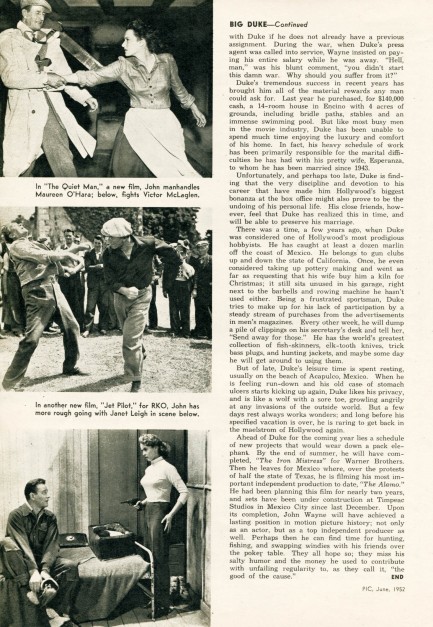
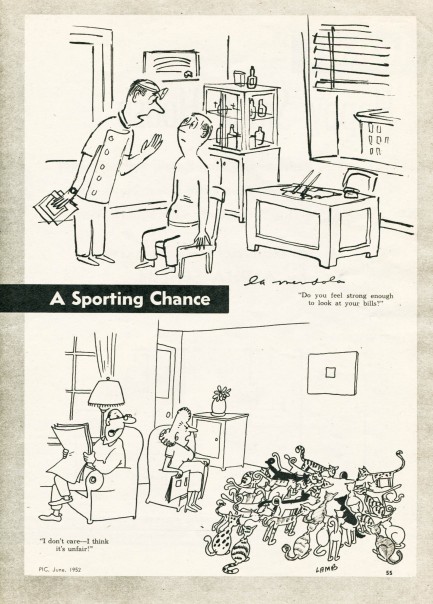
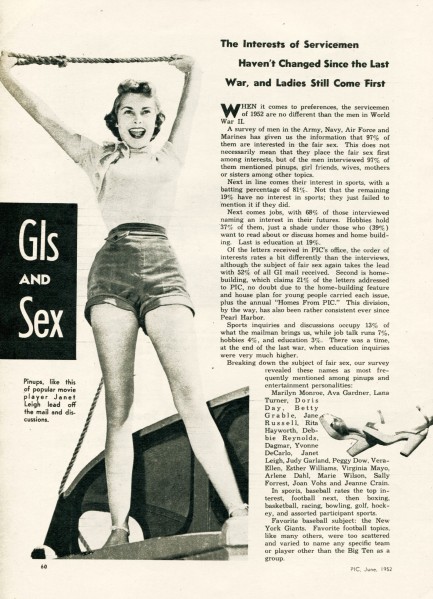
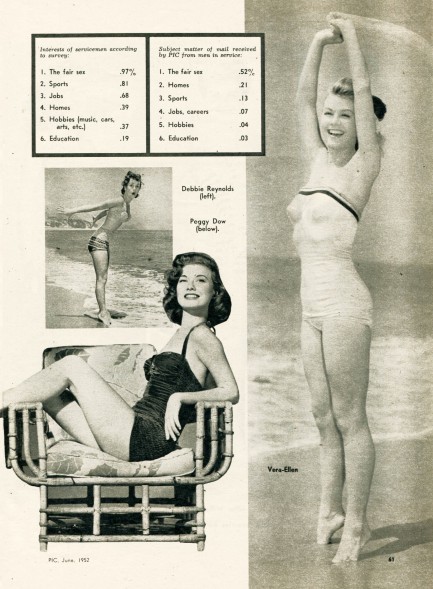
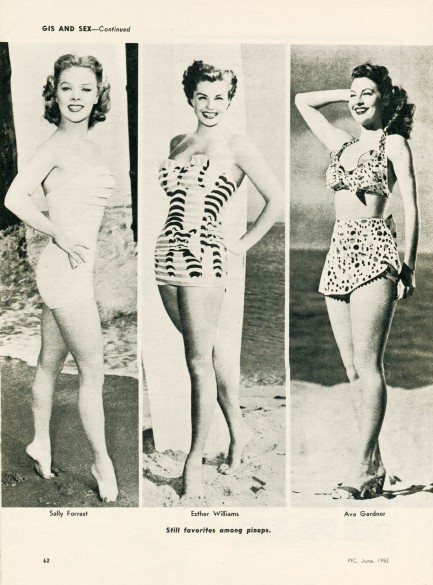
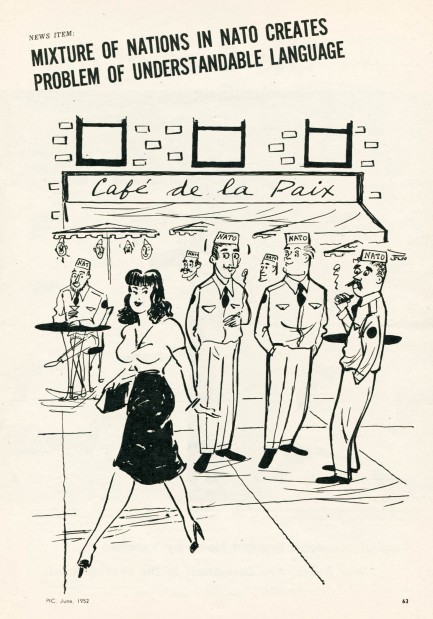
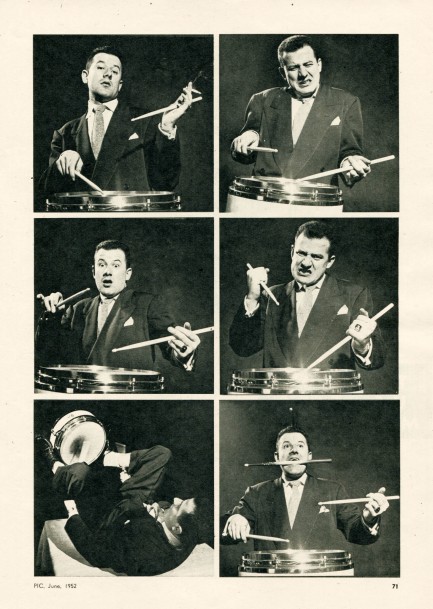
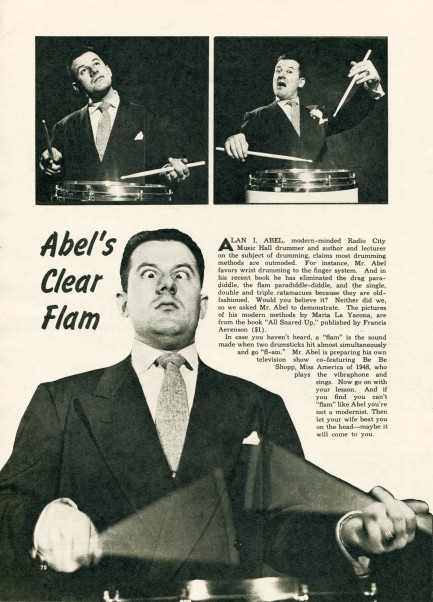
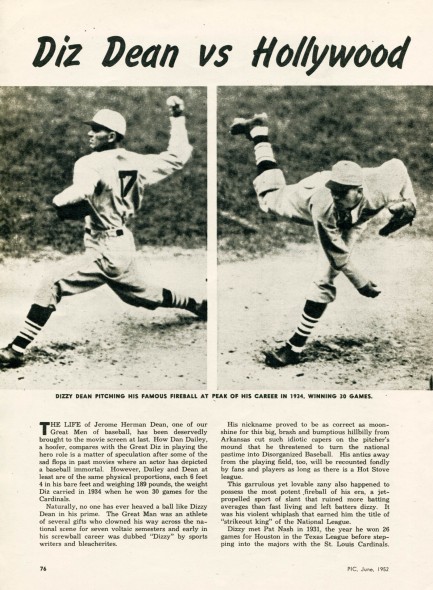
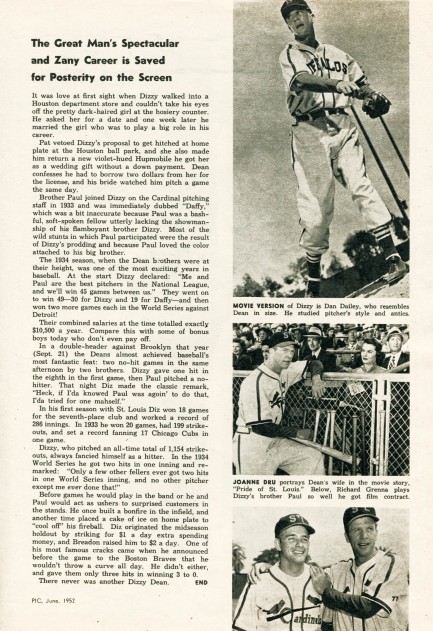
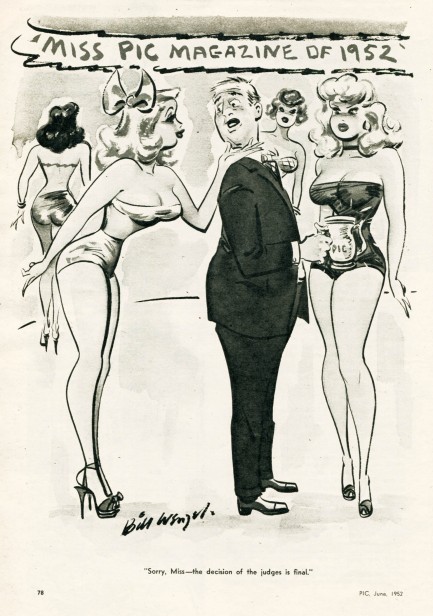
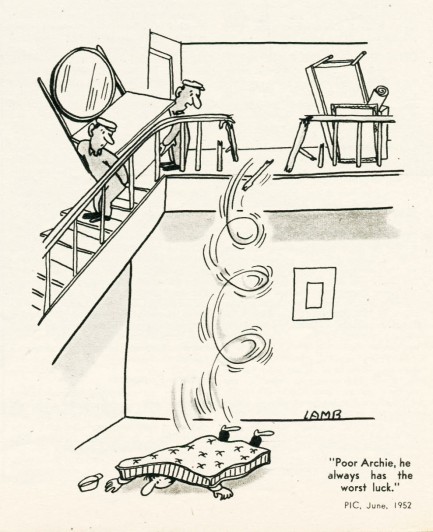

| Vintage Pulp | Aug 7 2012 |

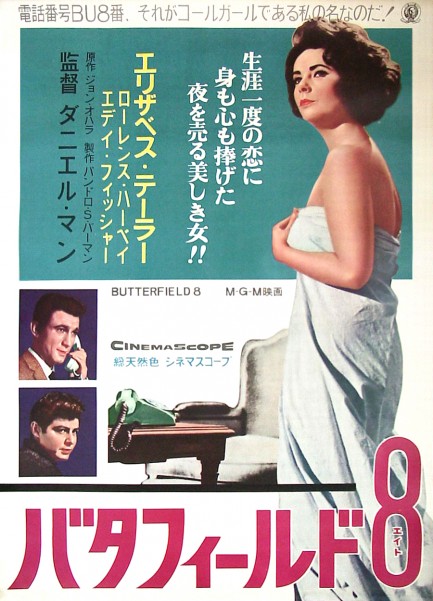
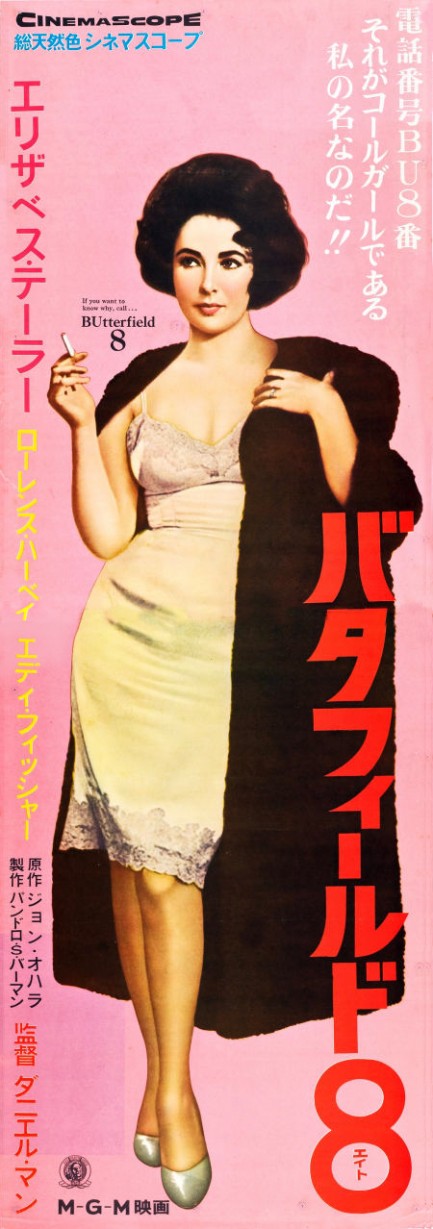
The 1960 melodrama BUtterfield 8—the capital BU being a phone exchange in New York City—was probably one of the most contentious productions in which Elizabeth Taylor was ever involved. Because she had just gotten her name splashed all over every tabloid on the planet for stealing the husband of America’s sweetheart Debbie Reynolds, and because her contract with MGM was ending and she wasn’t coming back to the studio, the suits decided to capitalize on her freshly ruined reputation by casting her as the promiscuous Gloria Wandrous. If the last name feels like a mash-up of “wondrous” and “wandering,” that’s an apt description for the character, who’s a home-wrecking maneater. But the studio suits weren’t done. Just to make sure the scandal rags were all over the story, they cast the man Taylor had stolen in real life—Eddie Fisher—in the film as well. Their goal seemed to be to generate attention and they succeeded. BUtterfield 8 was a success and Taylor snagged an Academy Award for her efforts, but she hated the film. The story goes that she threw her shoes at the screen the first time she saw it. The Japanese posters you see above are exceedingly rare. The first has never appeared online before, we're pretty sure; the second version, in pink with the unusual capital BU in the title, we found at an auction site. We can’t help but think even Elizabeth Taylor would have liked them.
Update: Oops, we forgot we had a third vesion of the poster. An unusual all black edition. We've uploaded it below, butter late than never. Heh. Um...
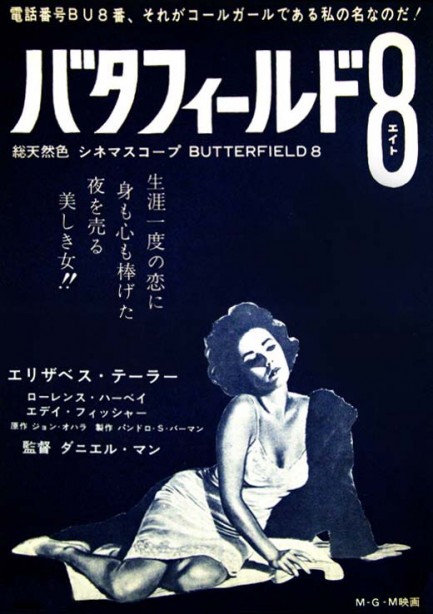
| Hollywoodland | Jan 2 2012 |

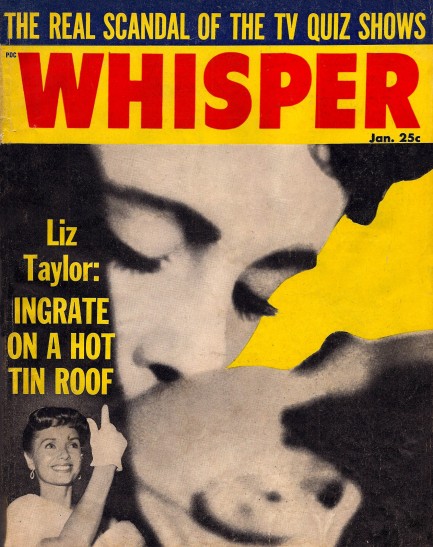
Hy Steirman’s Whisper magazine is generally considered to be less racy than when it was owned by Robert Harrison, but this issue from January 1959 shows a little of the old spark. It slams Elizabeth Taylor for stealing Eddie Fisher from Debbie Reynolds, with staff scribe Orson C. Green spewing forth this venom: But then Liz made clear to the whole world that beneath that lovely exterior there beats a heart of purest gall. She repaid the infinite kindness of her two friends by breaking up their marriage. Green goes on to describe Taylor trying to soak down New York’s Plaza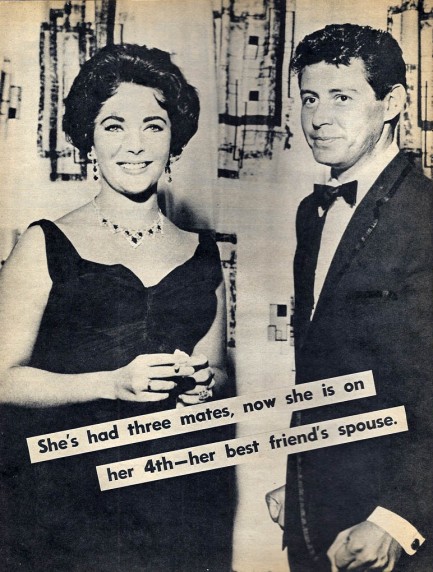
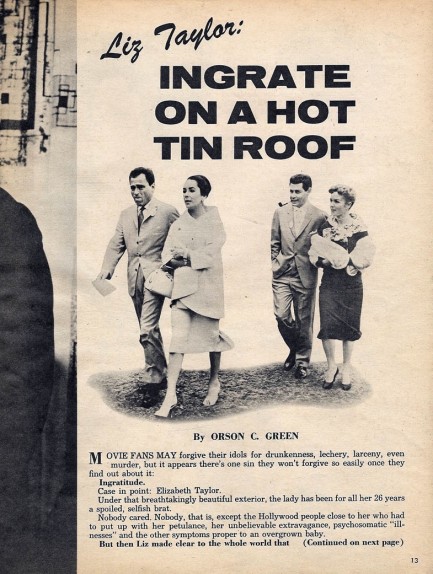
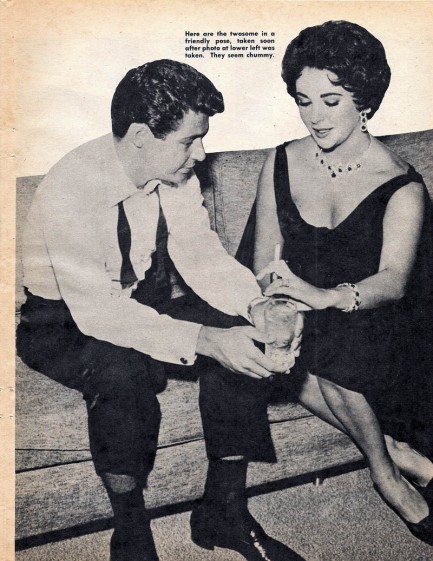
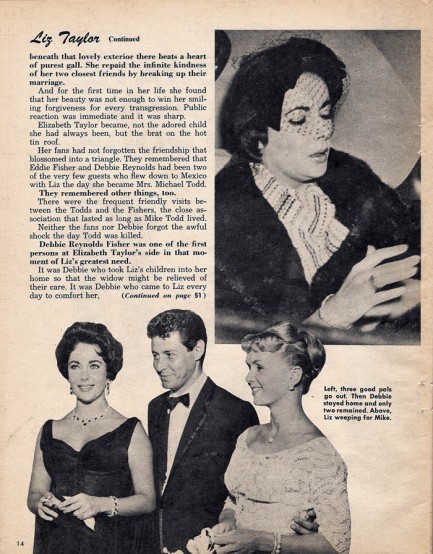 Hotel for two weeks of room charges, and then, when asked to pay, phoning up Montgomery Clift and getting him to help her trash the room. The article concludes: In short, Miss Taylor and friend Clift repaid [the Plaza] for its hospitality by deliberately making a mess for some forlorn chambermaid to clean up. Ingrate!
Hotel for two weeks of room charges, and then, when asked to pay, phoning up Montgomery Clift and getting him to help her trash the room. The article concludes: In short, Miss Taylor and friend Clift repaid [the Plaza] for its hospitality by deliberately making a mess for some forlorn chambermaid to clean up. Ingrate!
Whisper also takes on ex-King Farouk I of Egypt—who was a favorite tabloid target of the time—describing him as “Fatso Farouk”, “the roly-poly playboy of the Nile”, “the balding balloon boy” and worse. Readers are told that he was at Maxim’s in Paris one night and saw Coccinelle do a song accompanied by a striptease that left her in only a beaded g-string. Farouk, who was famously amorous, was so smitten that he sent his card and a bouquet of flowers backstage. Coccinelle came to say thanks, and when asked by Farouk agreed to go to dinner. Moments after she left the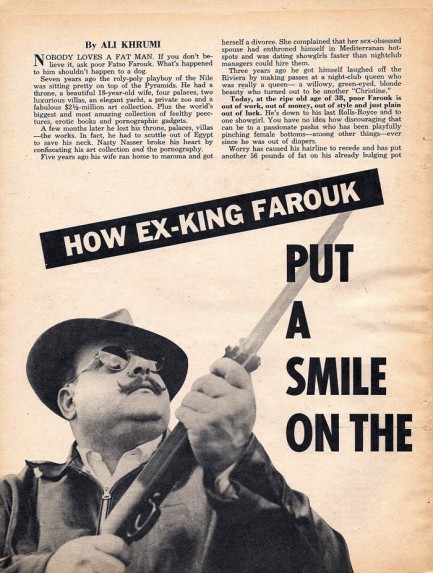
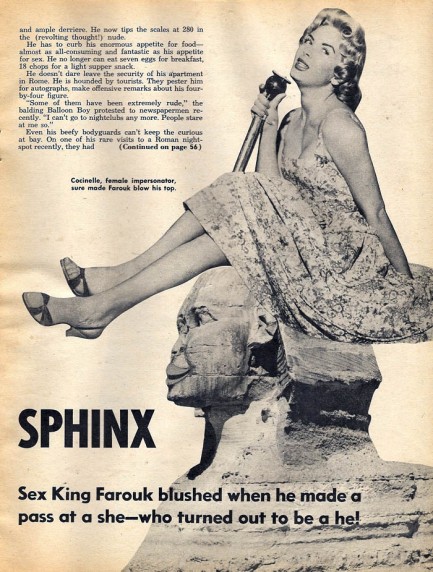 table one of the ex-king’s aide’s hastily scurried over and explained that Coccinelle had once been a man. Allegedly, Farouk flipped. Whisper describes overturned tables, broken bottles, the works. Readers are told: The whole Riviera rocked with laughter. The bulging butt of the joke fled to Rome.
table one of the ex-king’s aide’s hastily scurried over and explained that Coccinelle had once been a man. Allegedly, Farouk flipped. Whisper describes overturned tables, broken bottles, the works. Readers are told: The whole Riviera rocked with laughter. The bulging butt of the joke fled to Rome.
Whisper goes on to discuss sperm banks, state prisons, Vladimir Lenin, Josip Tito, and “white” slavery, but probably our favorite story is the one headlined: Do Ex-Prostitutes Make the Best Wives? A pertinent question. And whom did they get to write the answer? The byline says: by an Ex-Prostitute. We just love that. As far as whether Whisper gets any of its facts straight, we can’t really offer a guess, but this issue proves that even ten months after the sale from Harrison to Steirman, it hadn’t quite lost its spark. Things apparently went downhill pretty fast in the next few years, but we’ll judge that for ourselves as we examine more issues. Visit our entire Whisper collection by clicking its keyword at bottom.
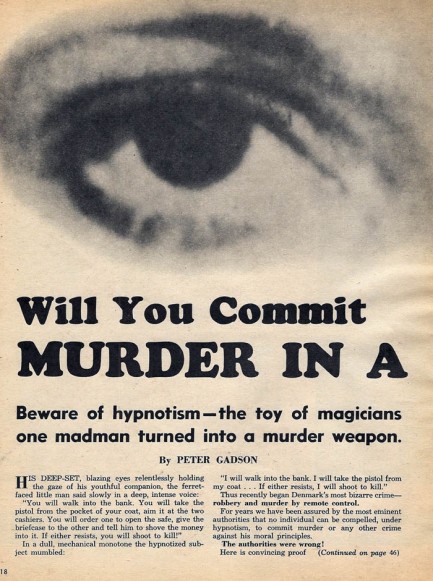
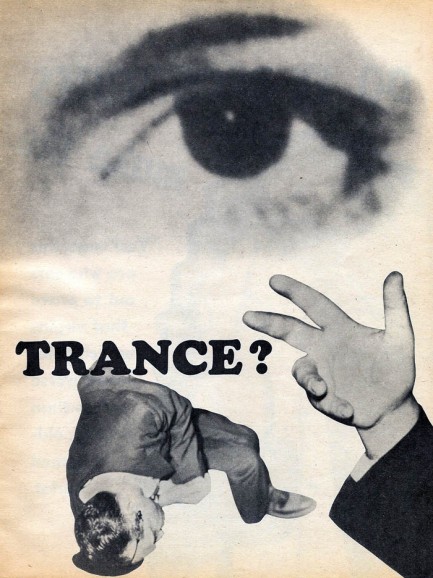
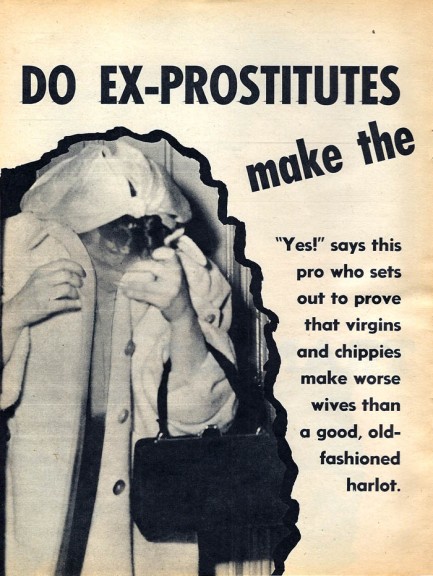
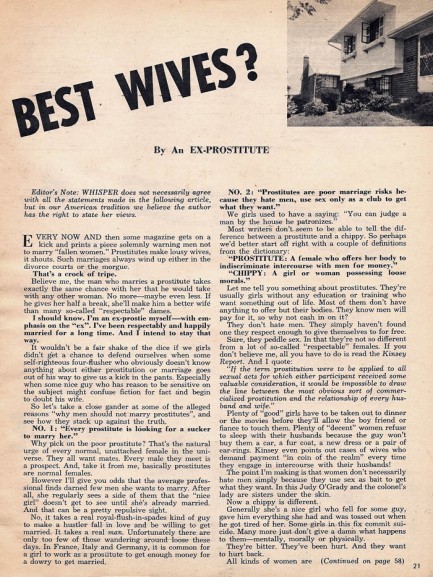
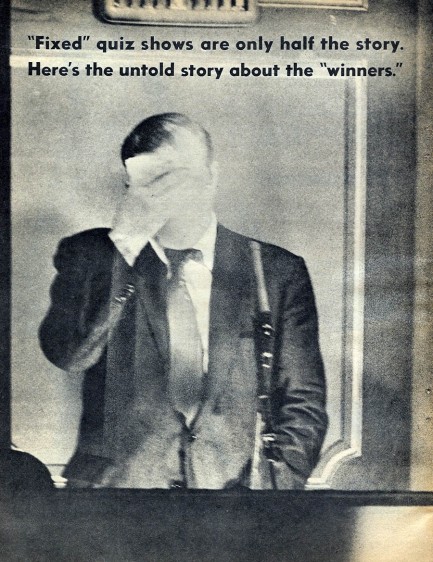
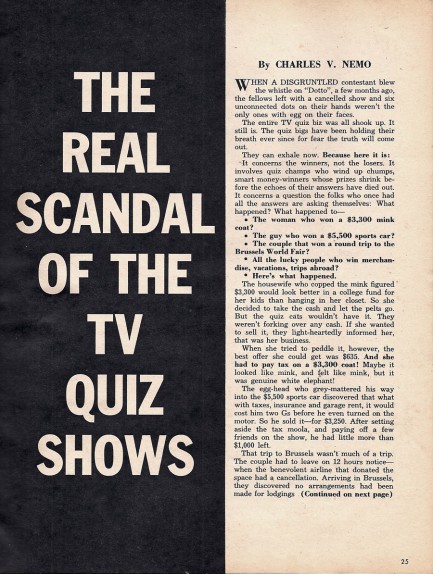
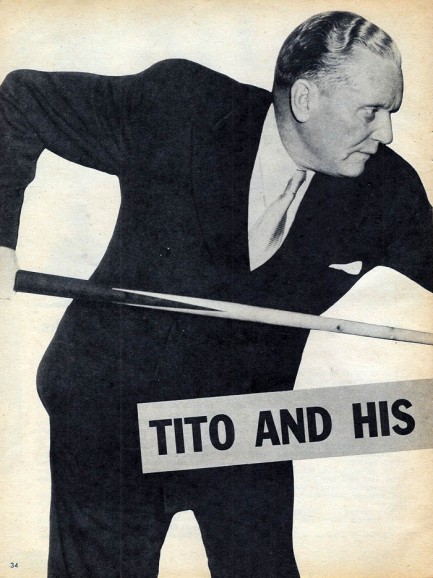
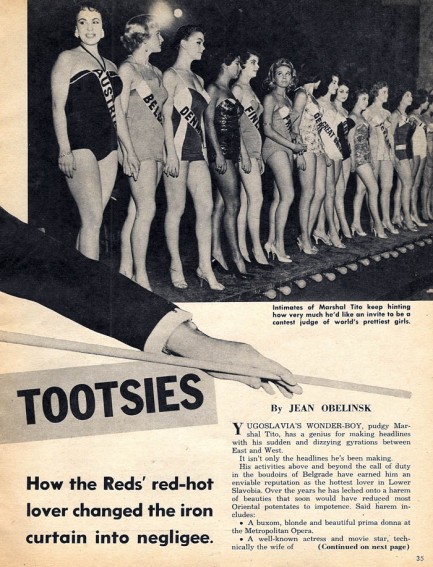
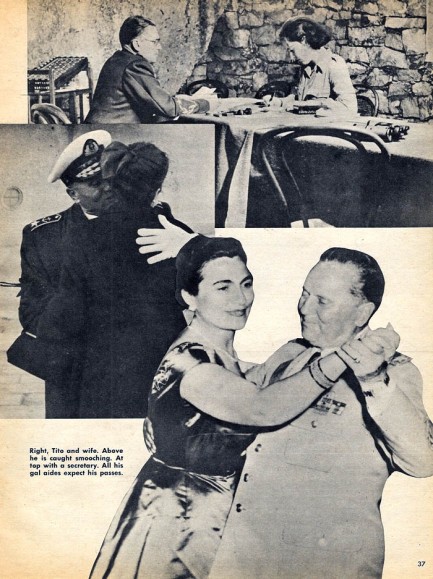
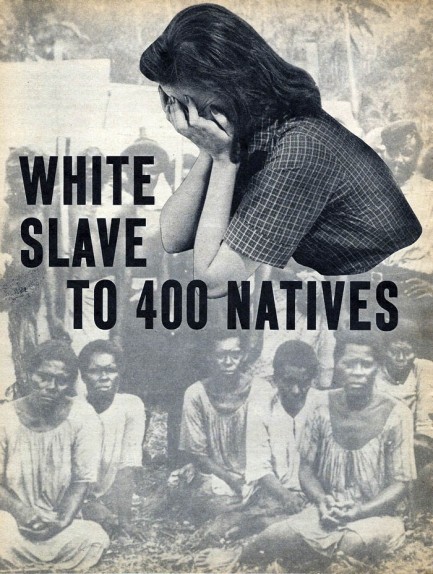
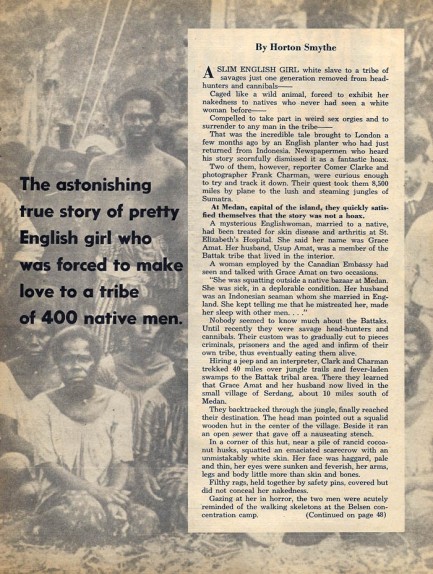
| Sex Files | Sep 13 2011 |

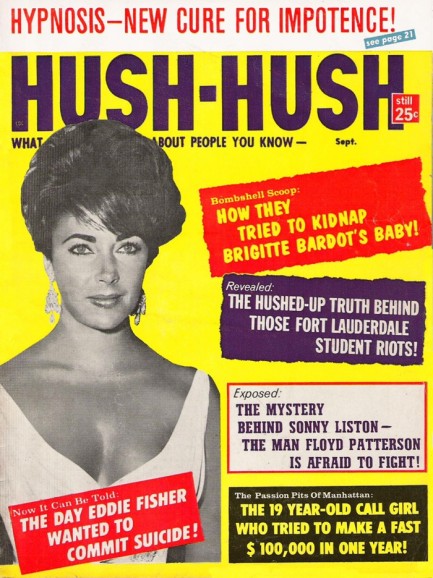
Mid-century scandal rag Hush-Hush gets all riled up in this September 1961 issue featuring cover star Elizabeth Taylor. Inside, readers are treated to exposés of Taylor, Eddie Fisher, Brigitte Bardot, Sonny Liston, and Beverly Aadland, as well as shocking tales about goings-on in Fort Lauderdale, Florida, and Baumholder, Germany, but it’s in the article on bodybuilding magazines that Hush-Hush truly gets out the knives.
Because erotic publications openly catering to gay males would have caused a legal firestorm in the early 1960s, various enterprising capitalists published gay content in the guise of bodybuilding magazines, using health and fitness as a cover for imagery designed to sexually titillate. Hush-Hush journo Sidney Reed jumps all over this practice in his article, informing readers about the existence of these magazines in terms so abusive we’ve never seen their equivalent in print anywhere. He uses phrases like “sex sick creepsters” and “lunatic depravity”, and there are many more insults, so colorful, so vicious, and piled so high that it begins to feel like satire.
But Reed is 100% serious, perhaps even obsessed. He finds, in one of the magazines he located, an ad for nude photographs of a fourteen-year-old boy, then tars all gay men with that brush, while of course sparing heterosexuals from the same treatment even though the trade in pre-pubescent girls was well-established and well-documented by that time. It’s worth pointing out once again that Hush-Hush wasn’t a fringe publication—it sold millions of copies a month. And so you get a sense of some very prevalent attitudes about homosexuality in the early ’60s. We have many scans below, and more issues of Hush-Hush coming later.

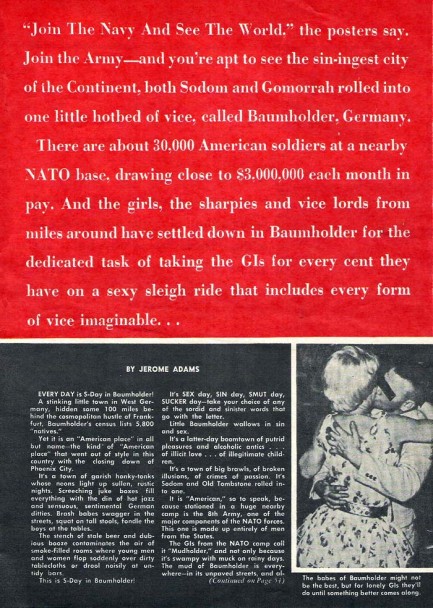
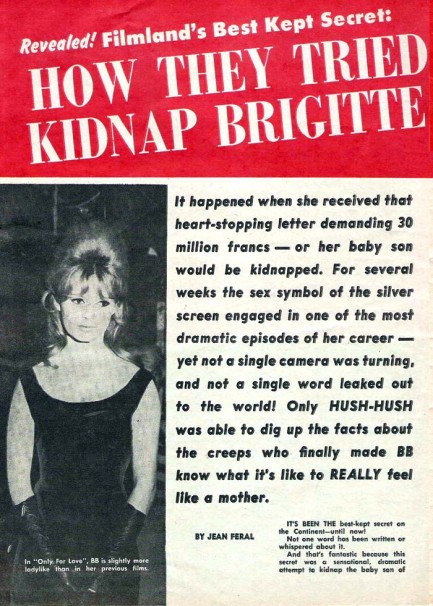
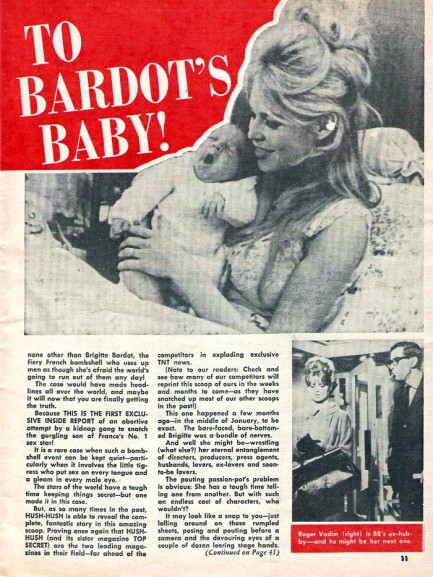
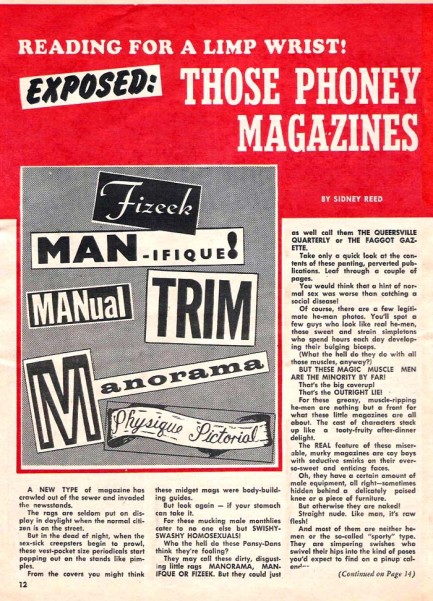
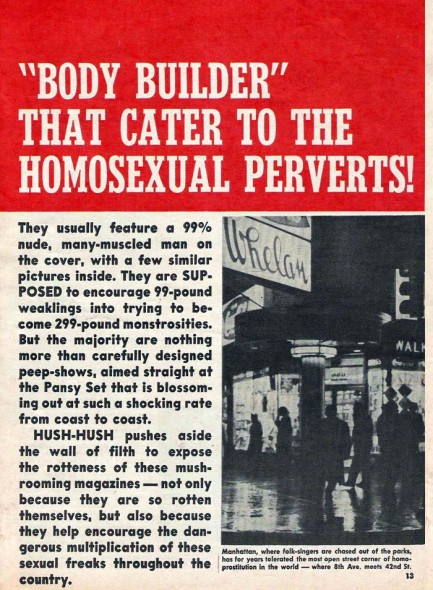
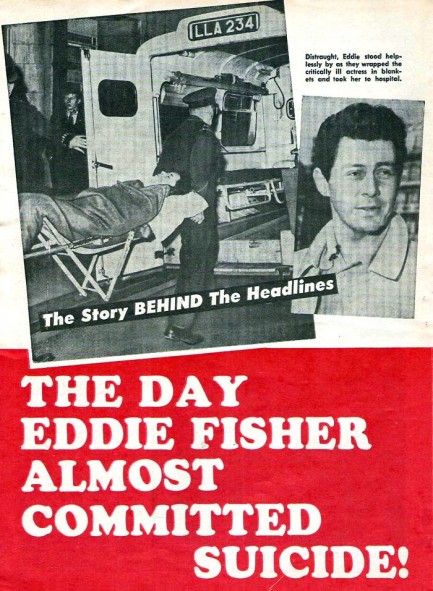
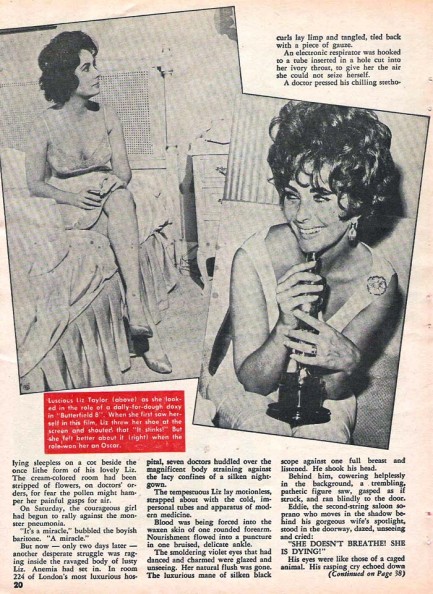
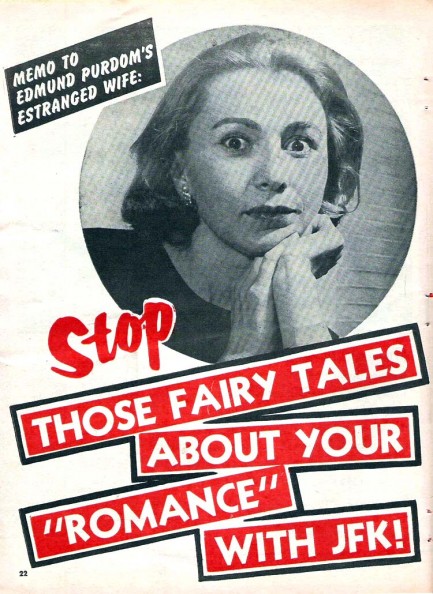
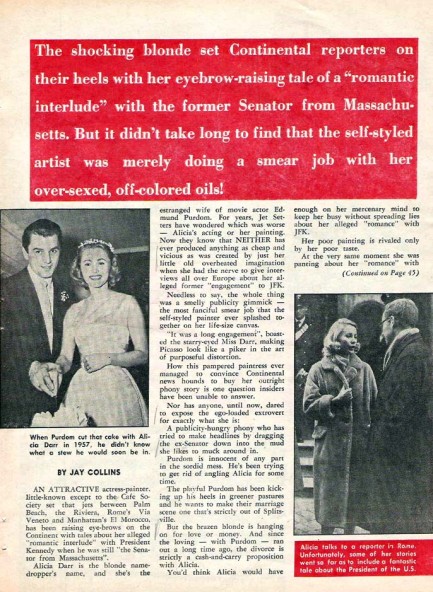
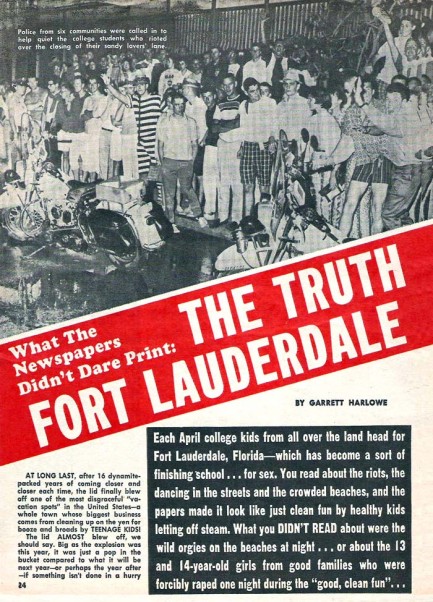
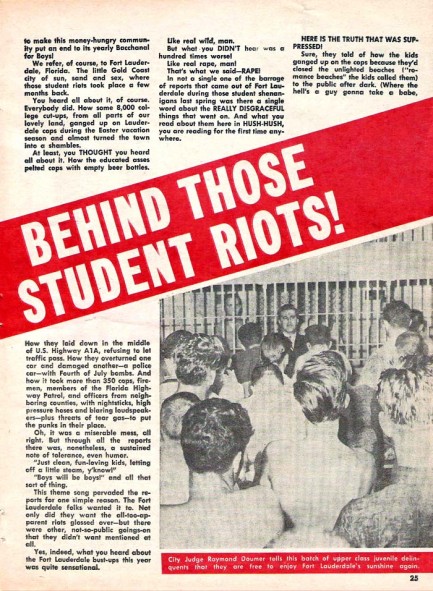
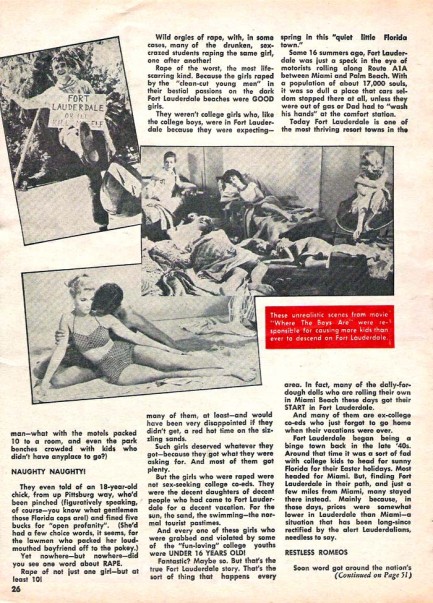
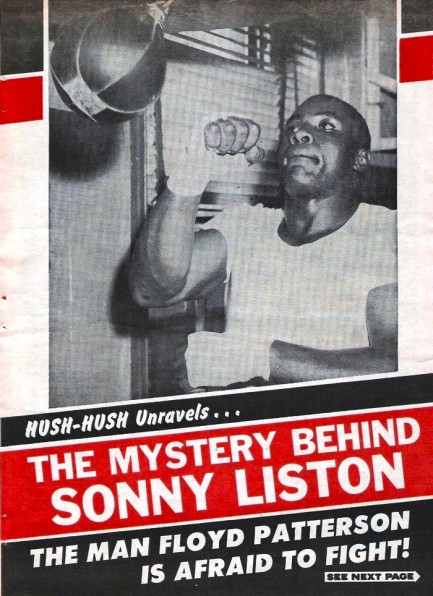
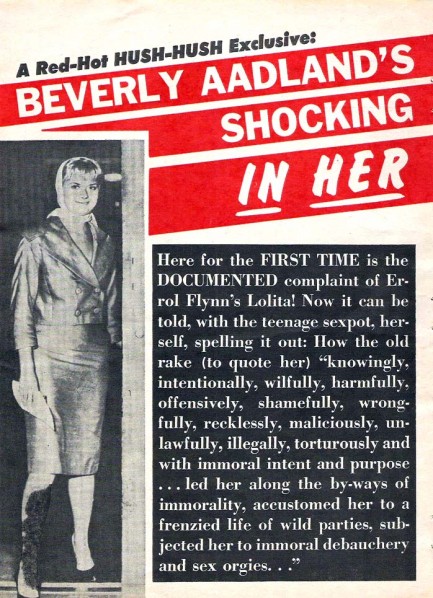
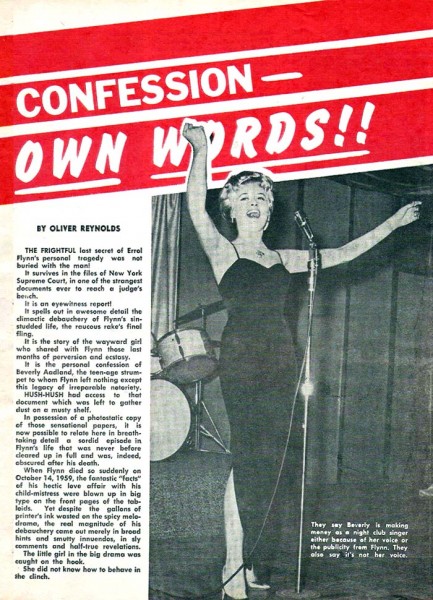
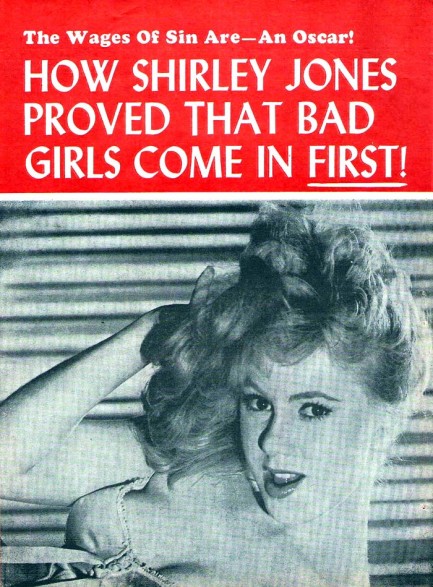
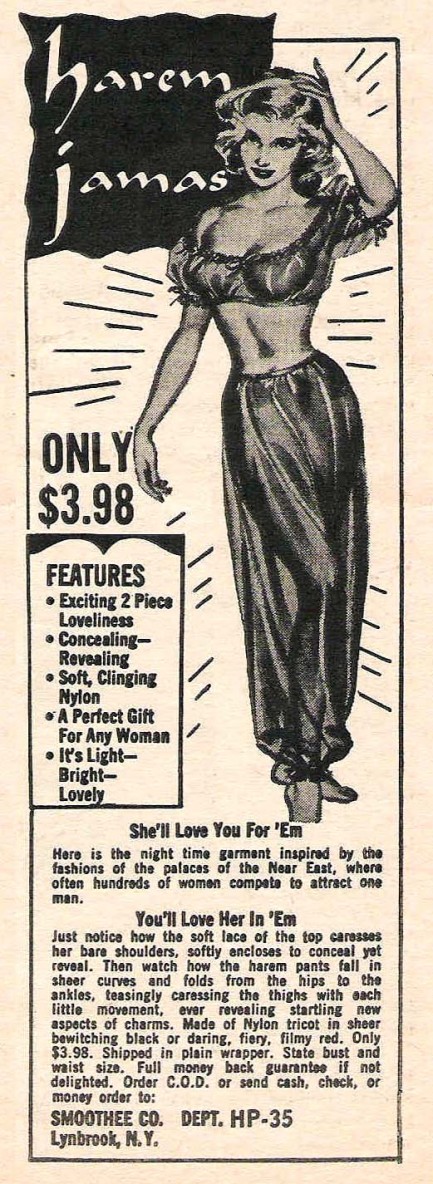

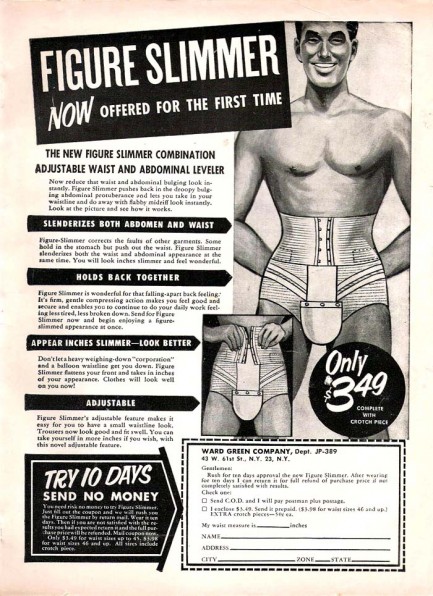
| Vintage Pulp | Feb 25 2011 |

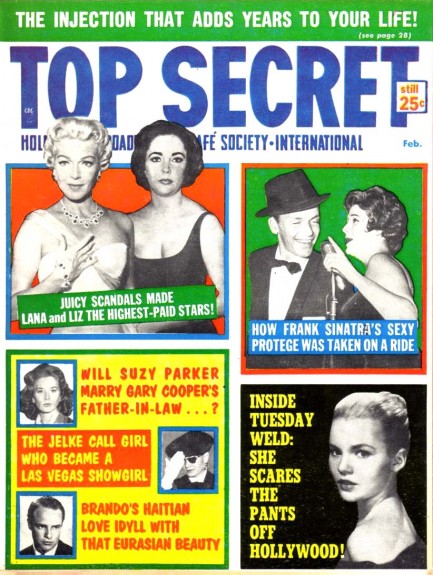
Here’s a fascinating February 1960 issue of the mid-century tabloid Top Secret with a selection of dish on the celebs of the day. Of particular note is the item on Lana Turner and Elizabeth Taylor. Top Secret claims scandals made them the highest-paid stars in Hollywood. What were the scandals? Well, in 1958 Lana Turner’s teenaged daughter Cheryl Crane stabbed mob enforcer Johnny Stompanato to death. The sensational murder trial that followed ended in Crane’s acquittal on the grounds of justifiable homicide, i.e., Stompanato had been beating Turner and Crane put a stop to it. As for Taylor, her scandal involved taking Eddie Fisher away from his wife, the incredibly popular and beloved singer/actress Debbie Reynolds. Later the same year Taylor agreed to star in Cleopatra for a million dollars—an astonishing sum at the time. But while Top Secret draws a direct line between this kind of pay and a messy personal life, there’s another possible consideration. In light of Lana Turner’s 1958 Academy Award nomination, and Elizabeth Taylor’s eventual five nominations and two wins, maybe the two were highly paid because of their talent. It’s just crazy enough to be true.
| Sex Files | Jan 26 2011 |

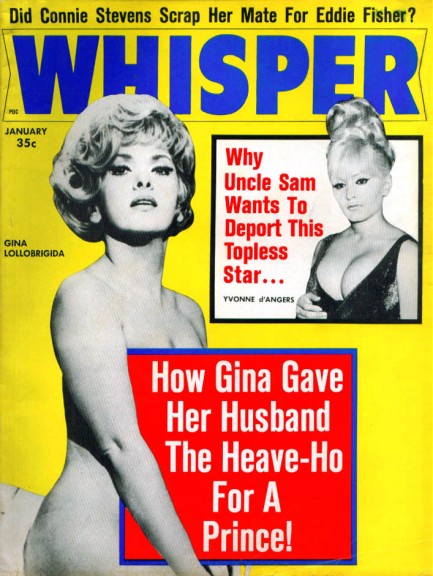
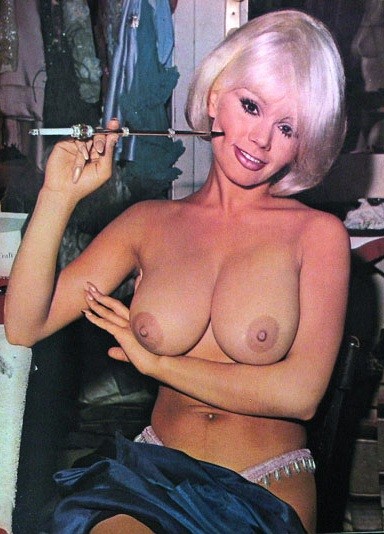
This January 1967 issue of Whisper digs up dirt on Gina Lollobrigida, Eddie Fisher and Connie Stevens, and tells us why Uncle Sam wants to deport a topless dancer. The latter is actually an interesting story. The topless star in question is Iranian-born burlesque dancer Yvonne D’Angers, aka Yvonne Boreta, and the reason she was being deported was for obscenity.
D’Angers, who was also known by the nickname the Persian Lamb, had already been involved in a 1965 obscenity trial over the employment of topless waitresses and dancers by various San Francisco nightclubs and had gotten herself on the radar of political bluenoses scandalized by her act at the Off Broadway.
When the deportation order came, d’Angers waged a very public battle against it and finally, in 1967, chained herself to the Golden Gate Bridge in protest. The press turned out in droves for the bizarre spectacle, and all the publicity made her nationally famous. At that point she was able to make the leap into motion pictures, appearing in 1968’s Sappho Darling, 1970’s Move with Elliot Gould, and the 1971 Russ Meyer flick The Seven Minutes. And in the end d’Angers was never deported, so, in this case at least, protest paid. So there's a lesson for all of us.
